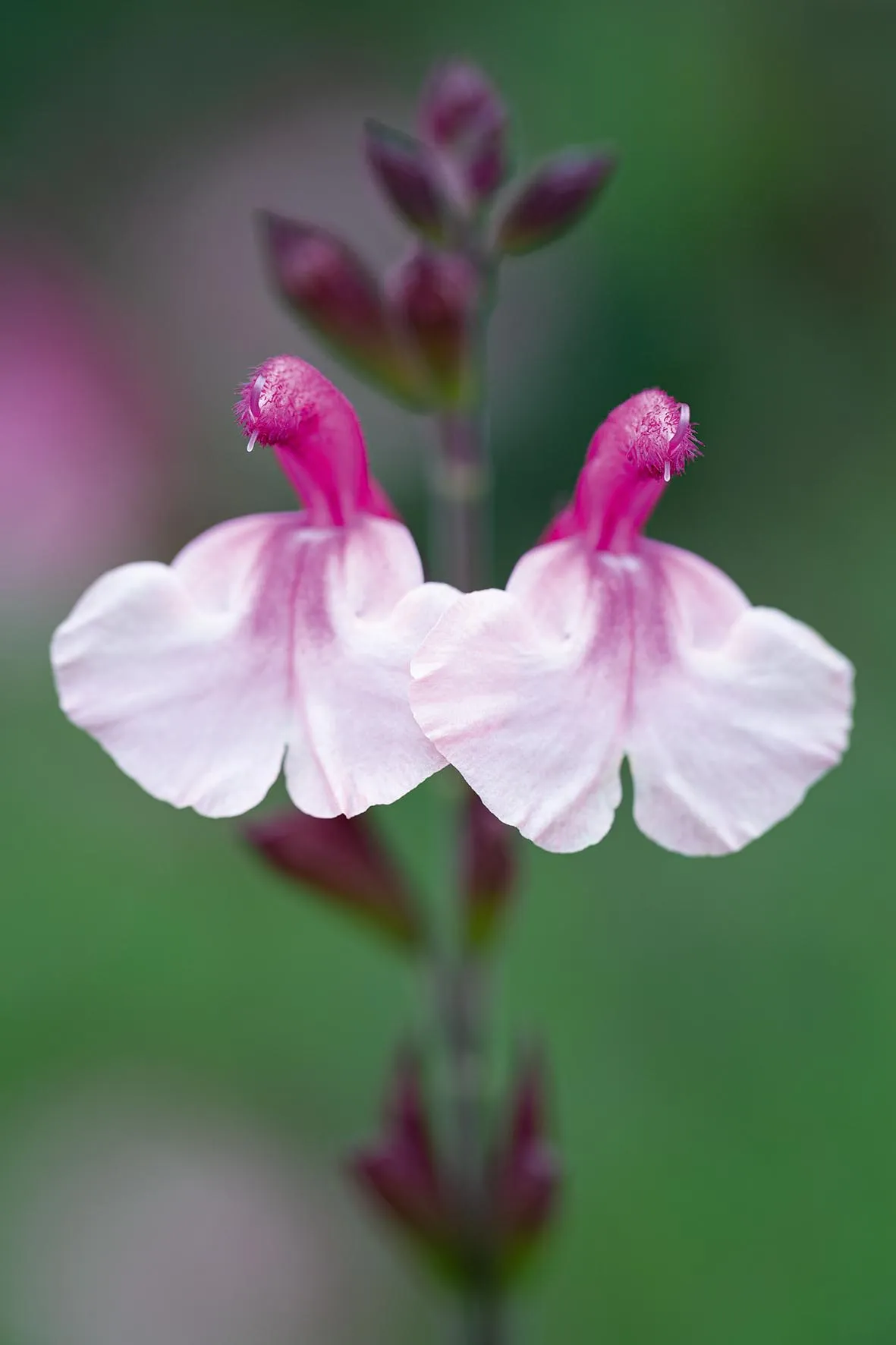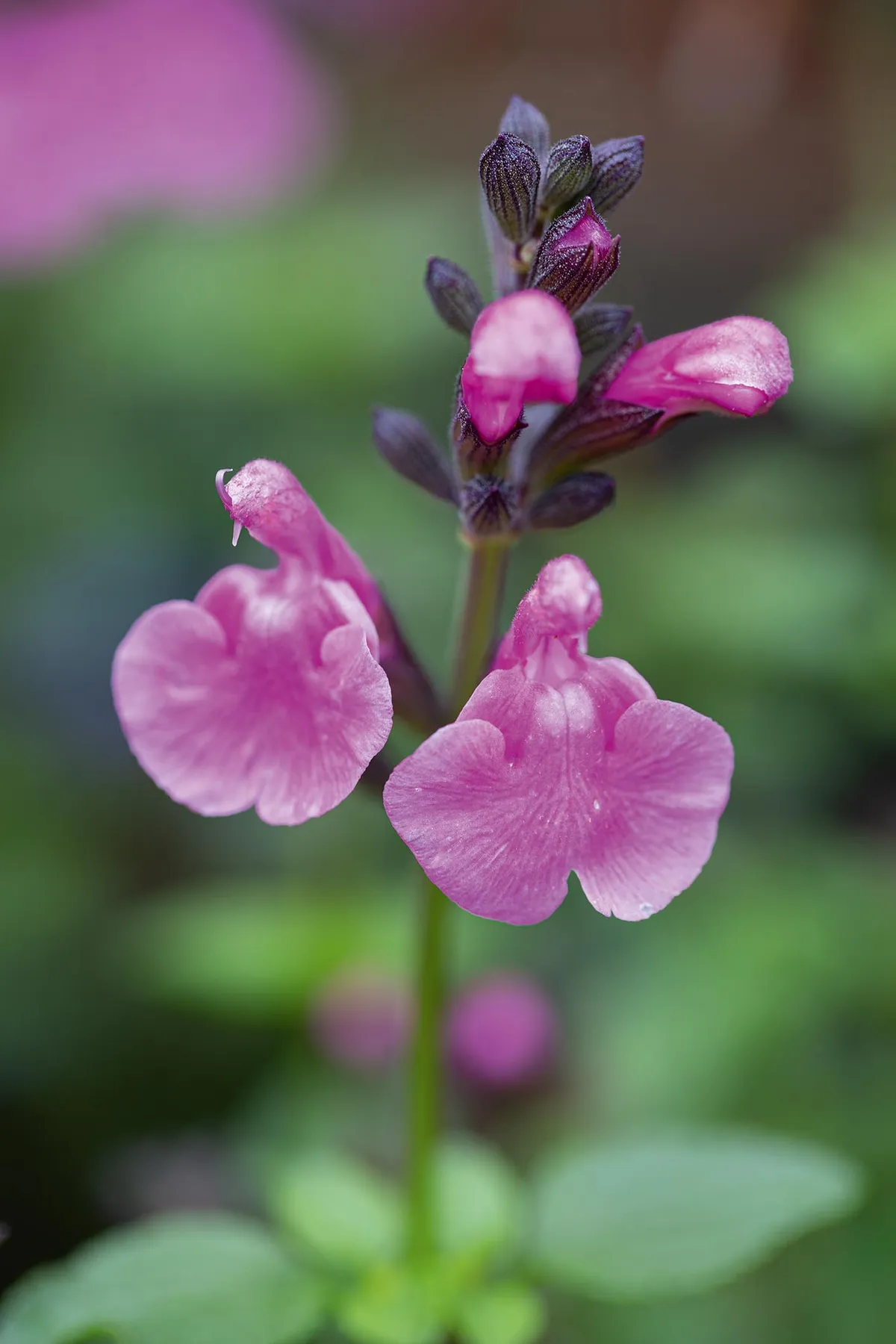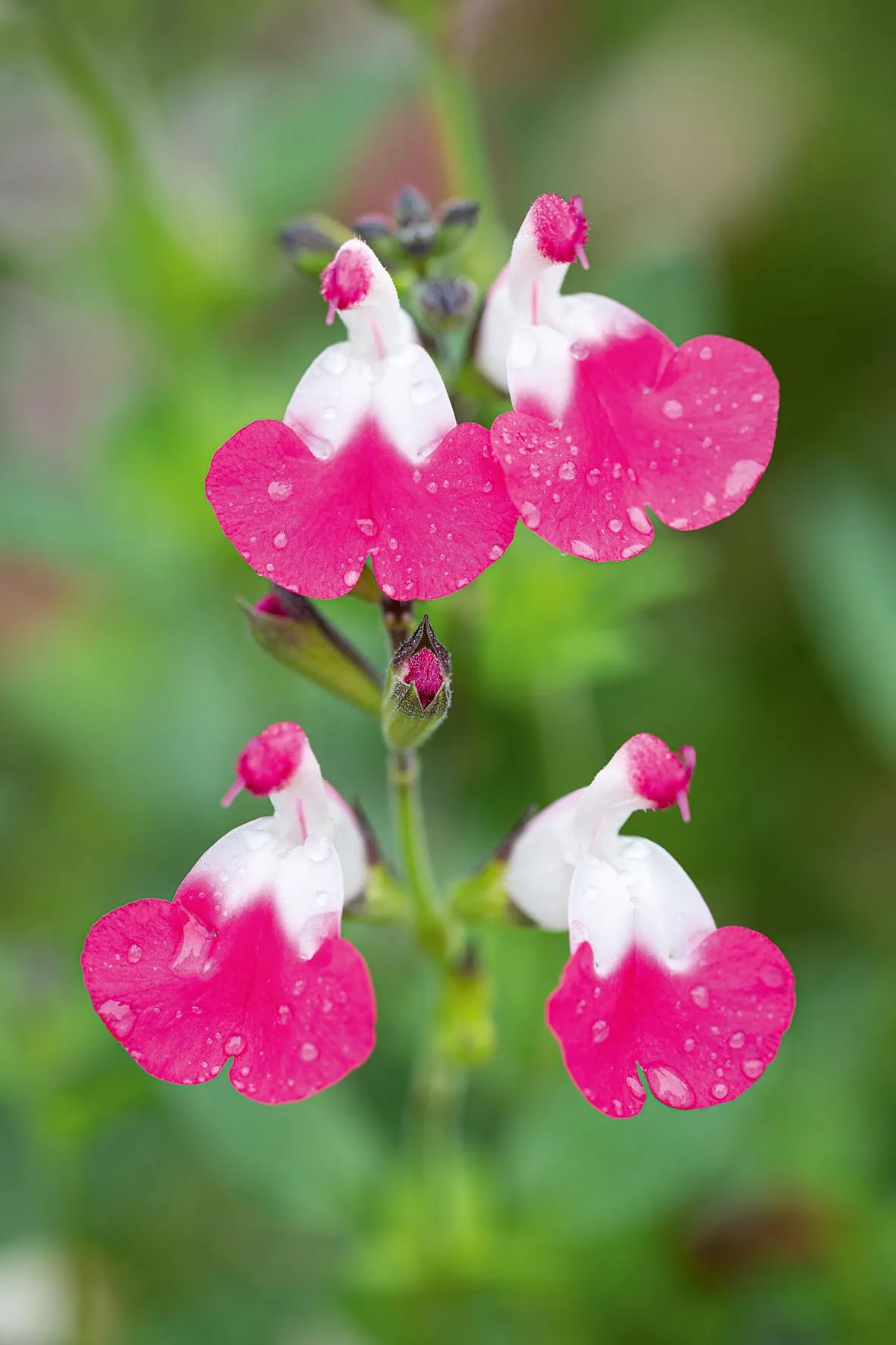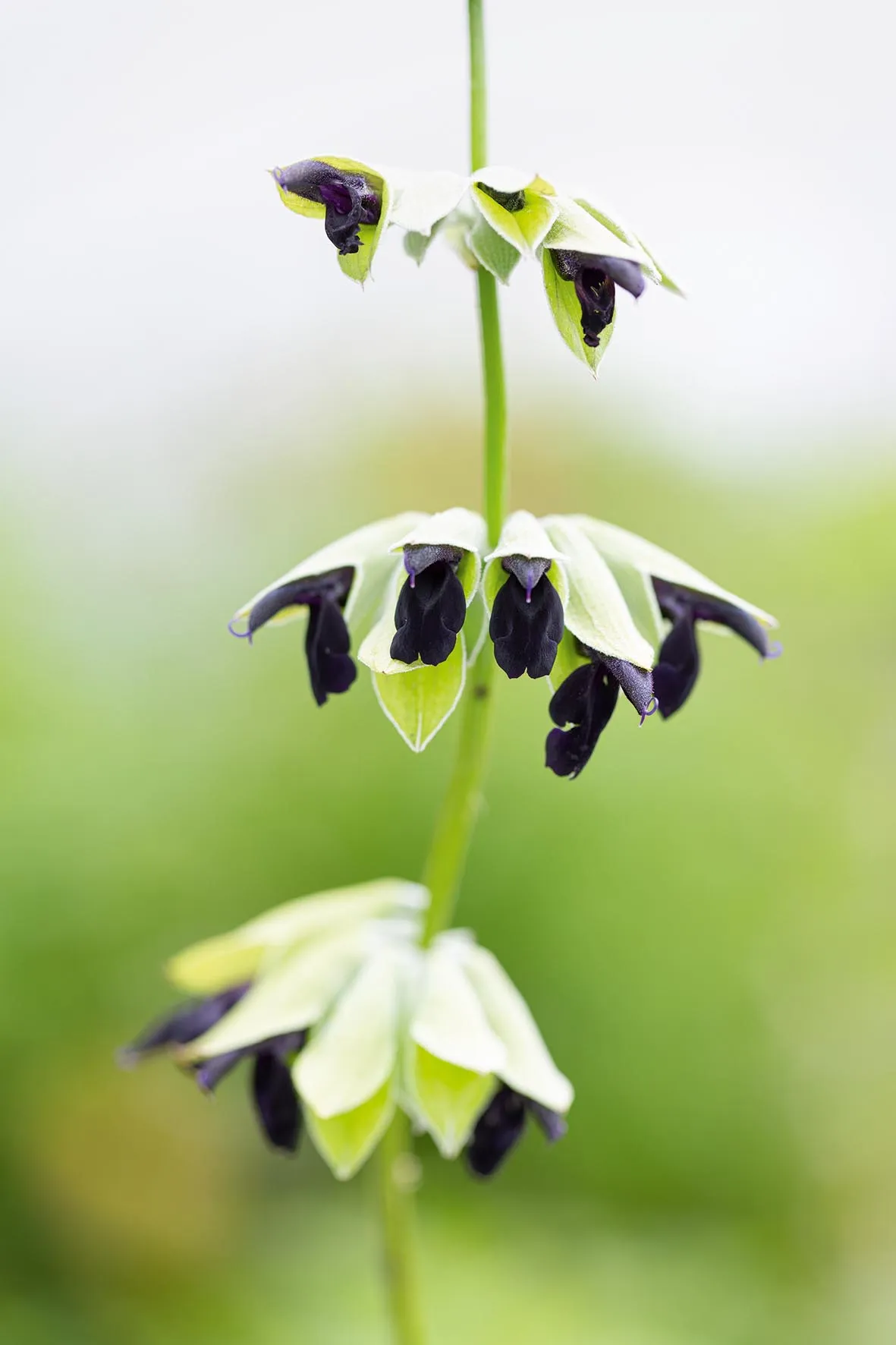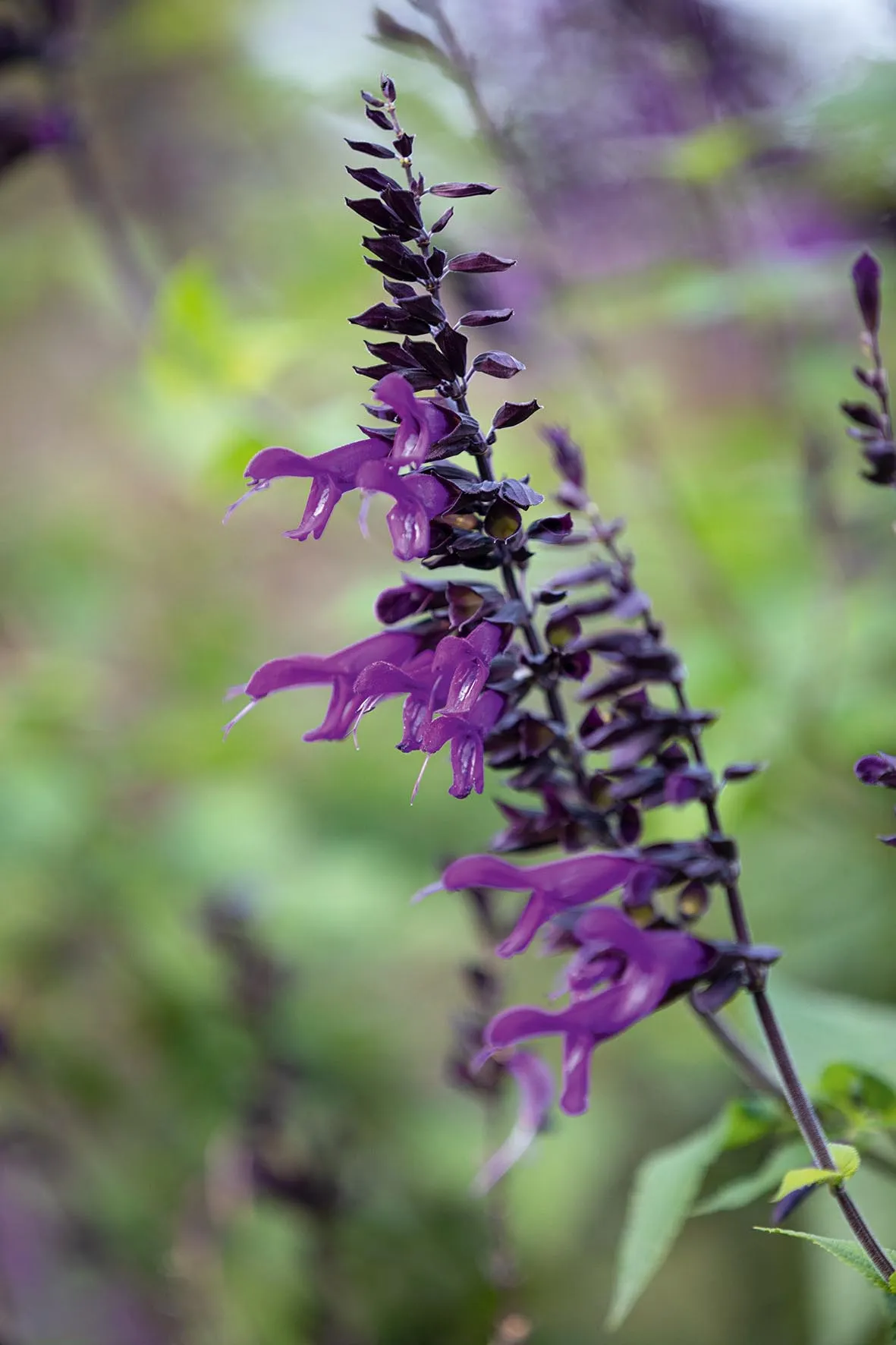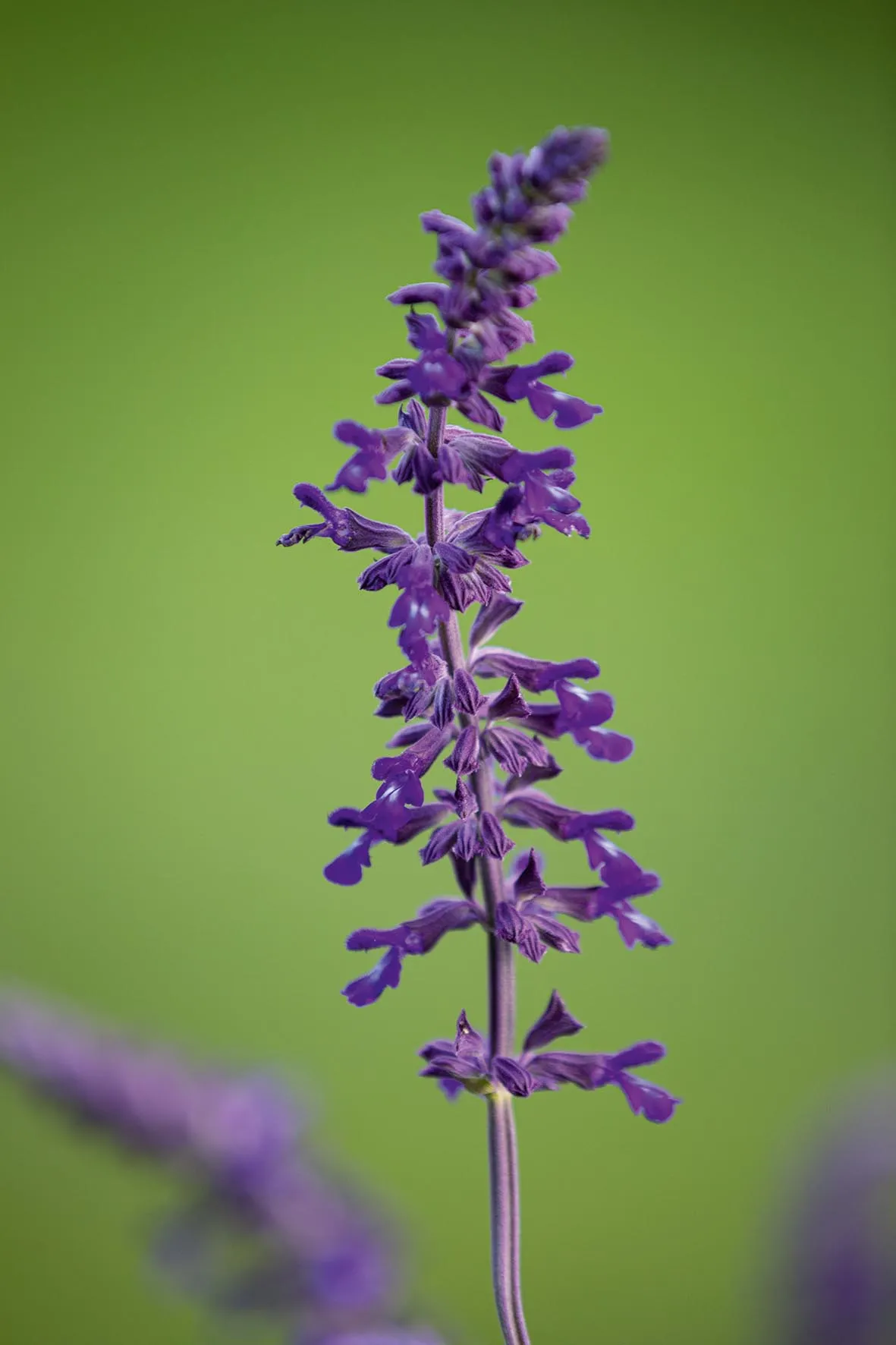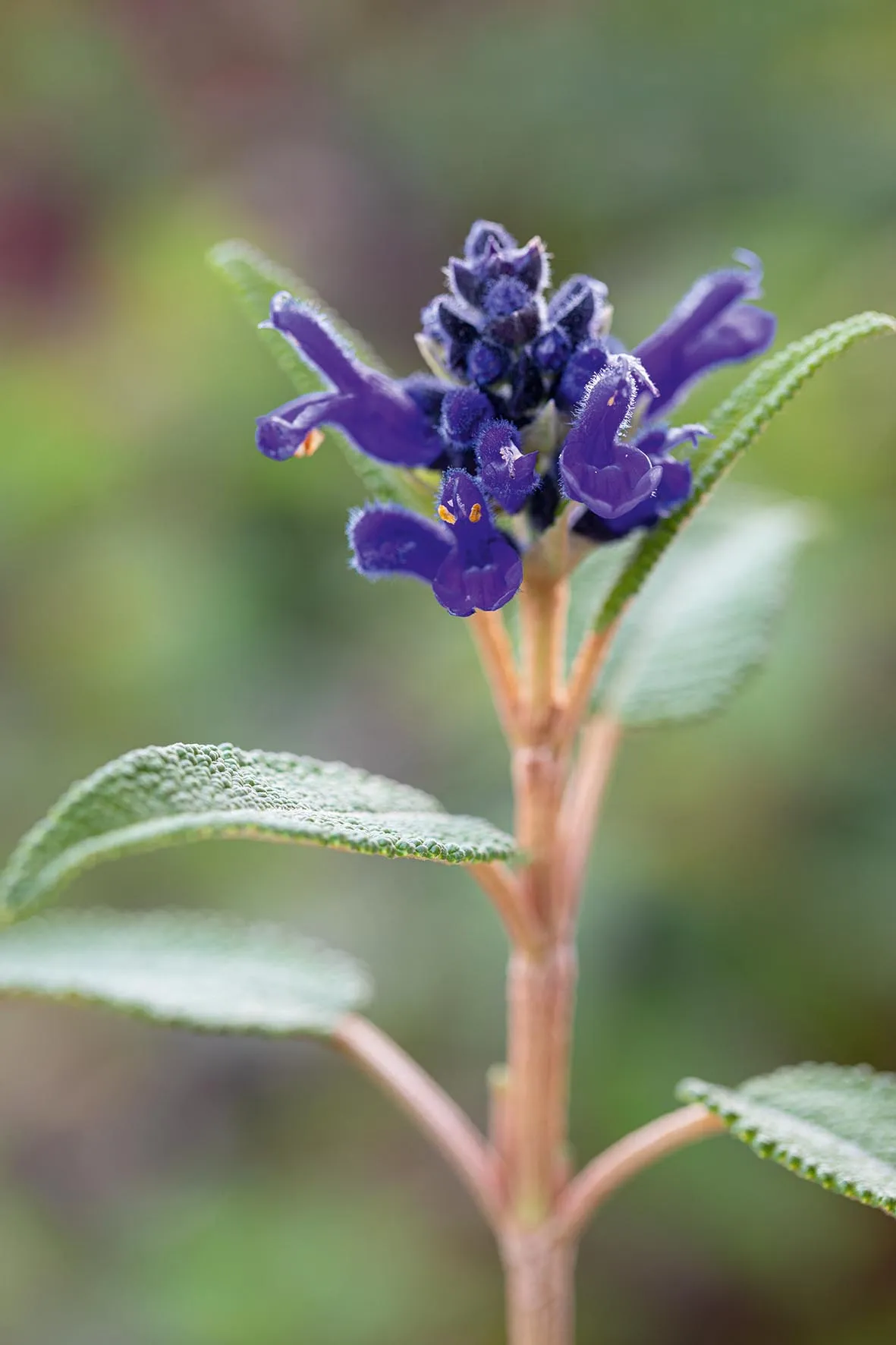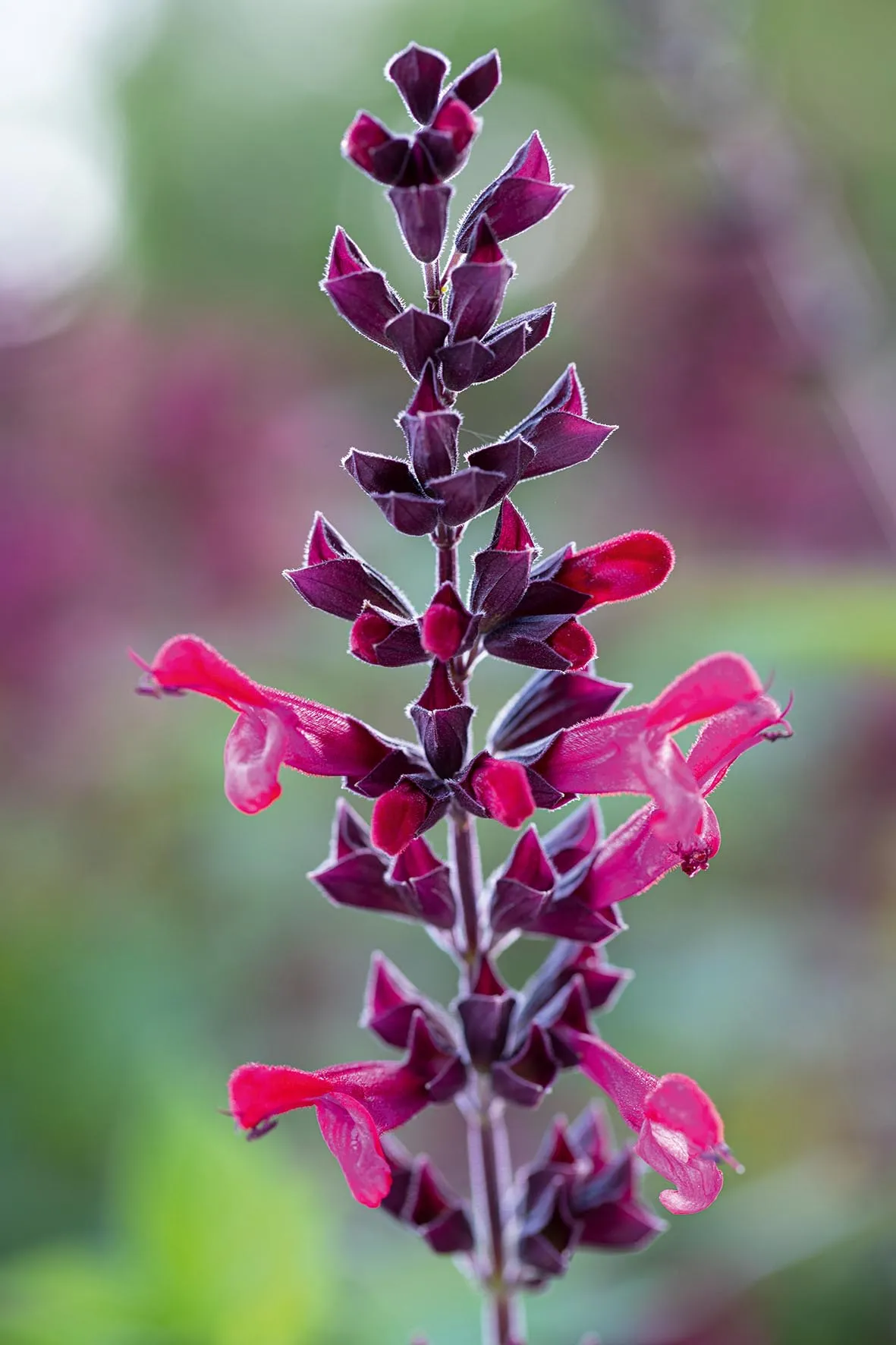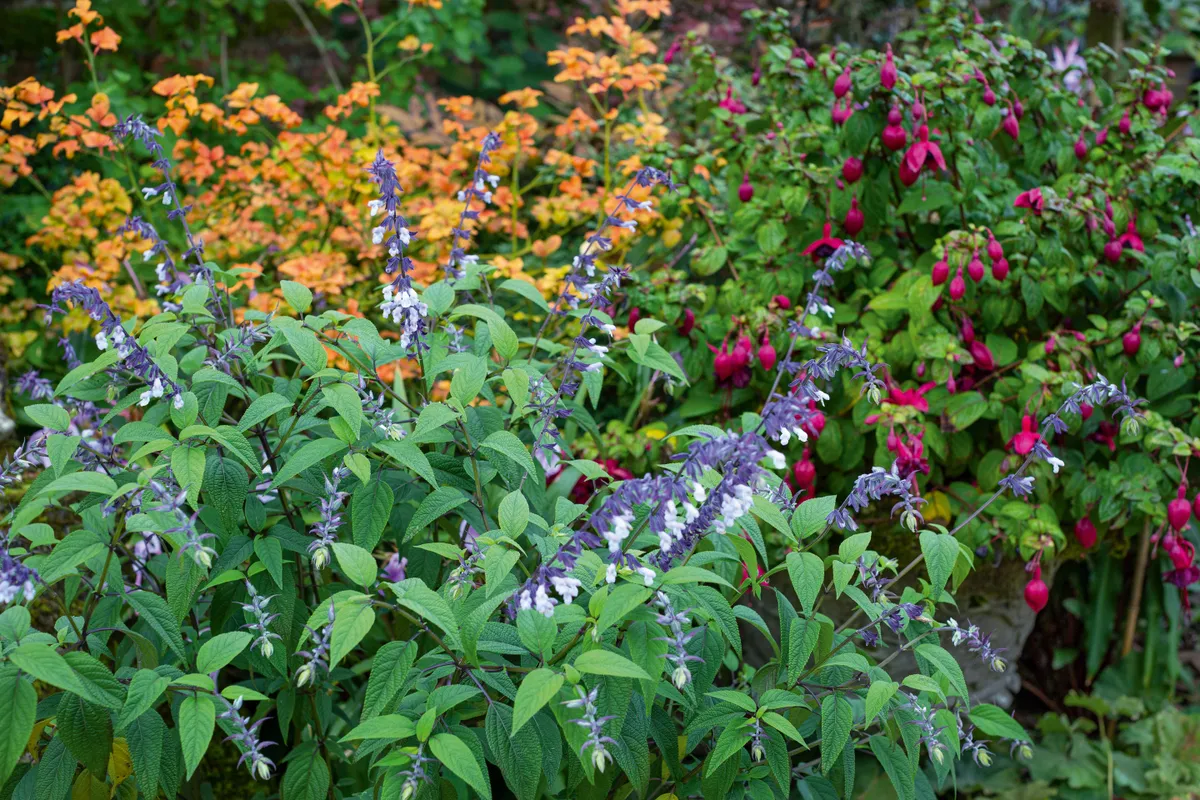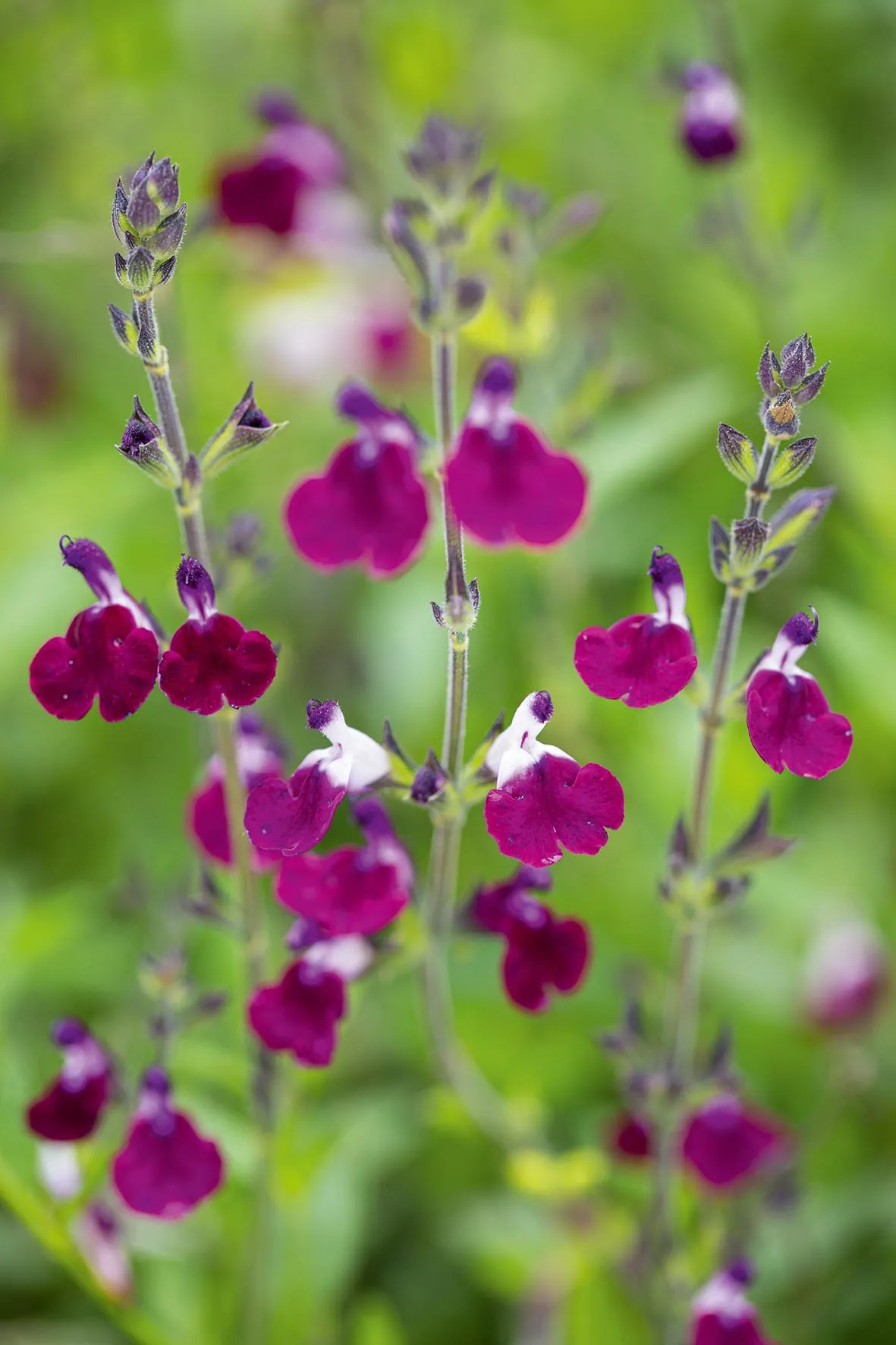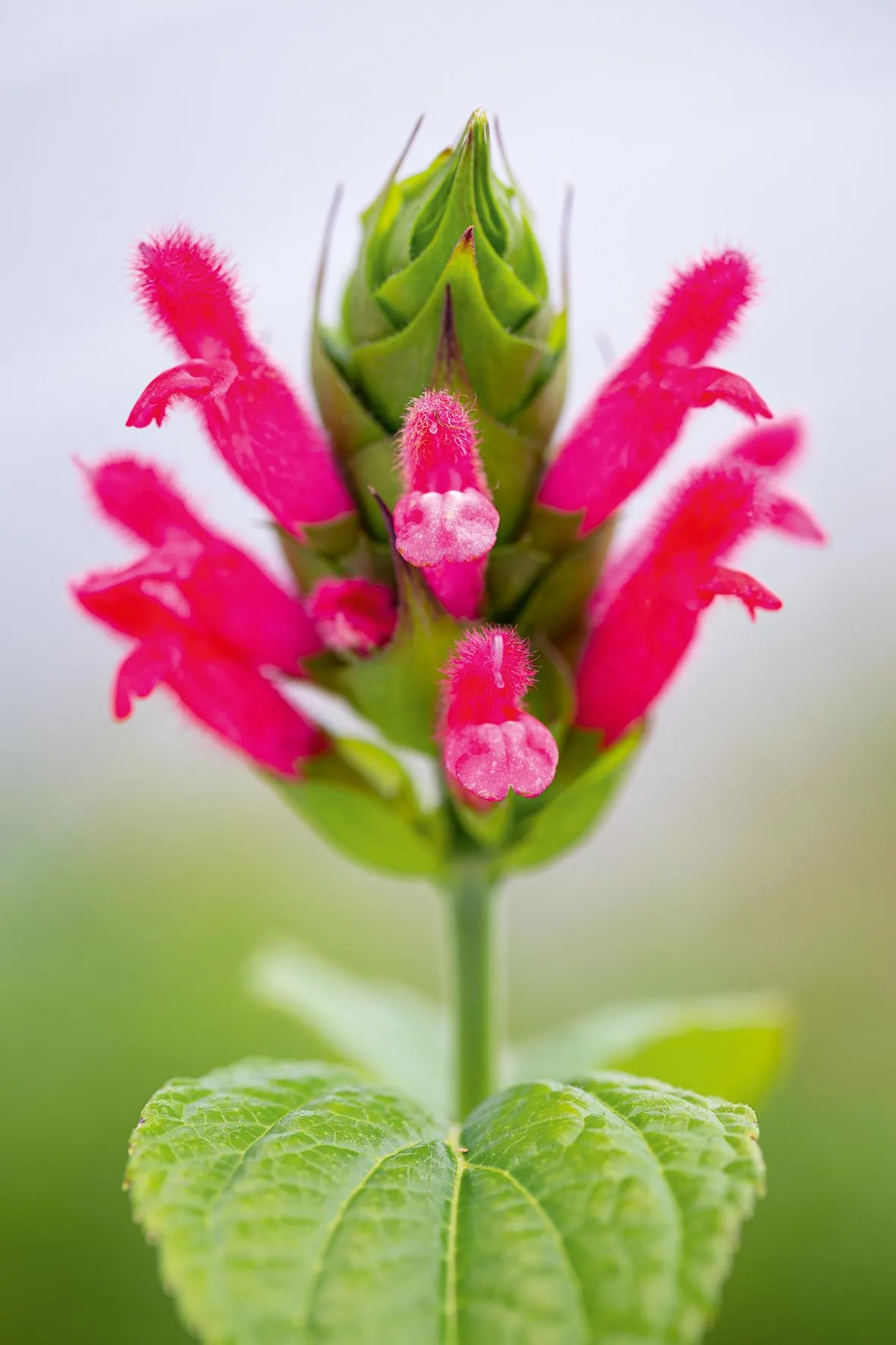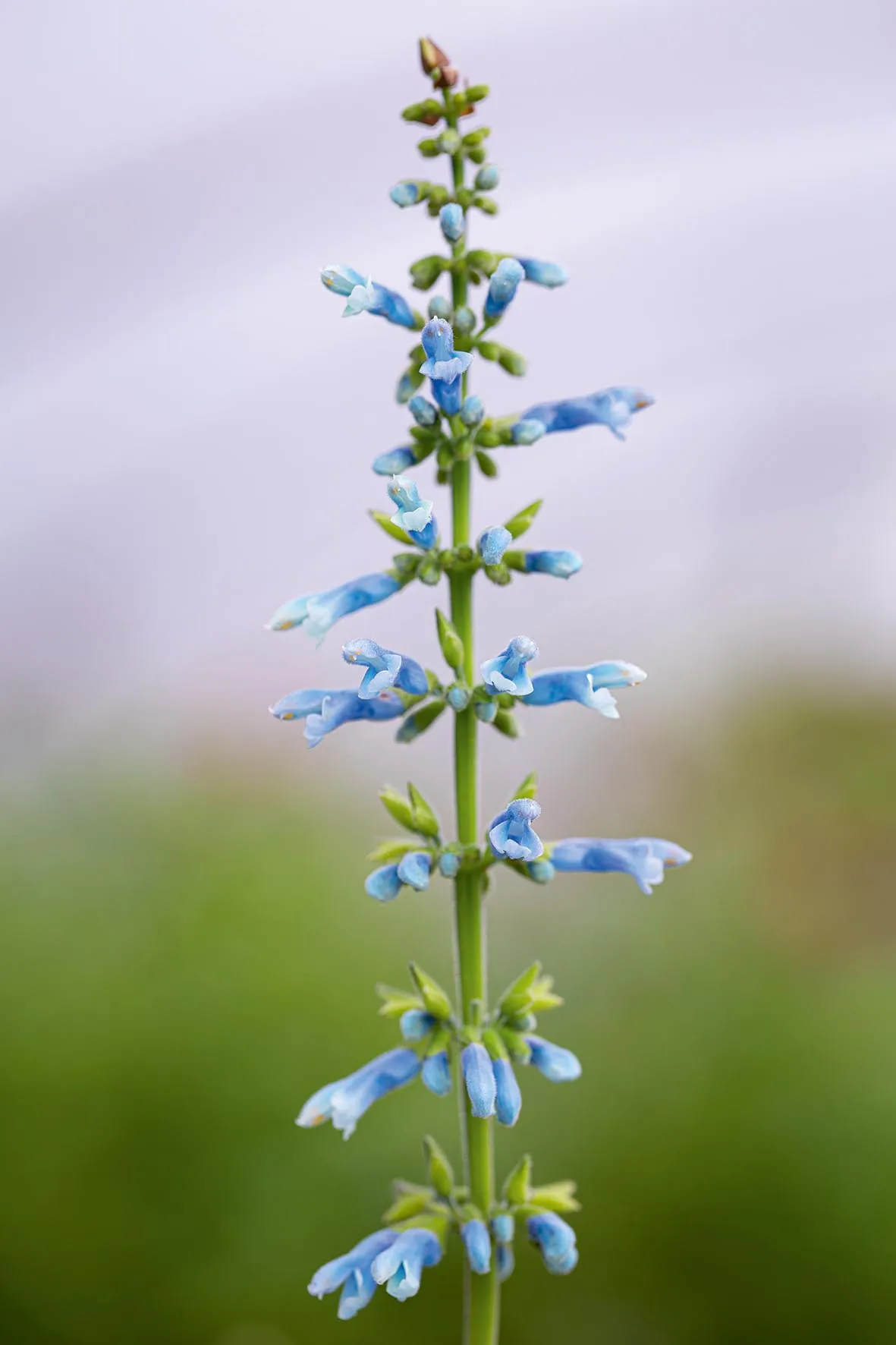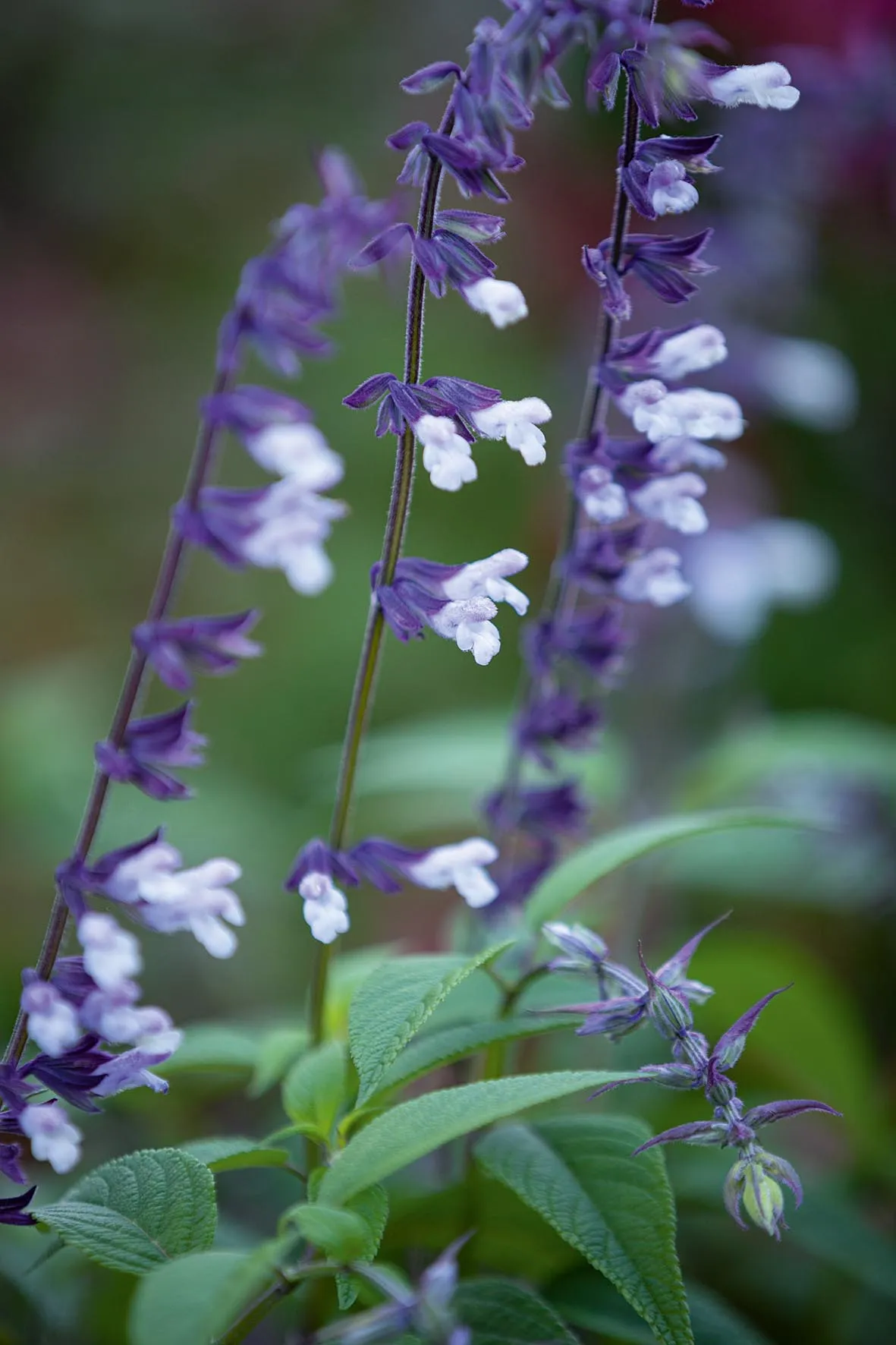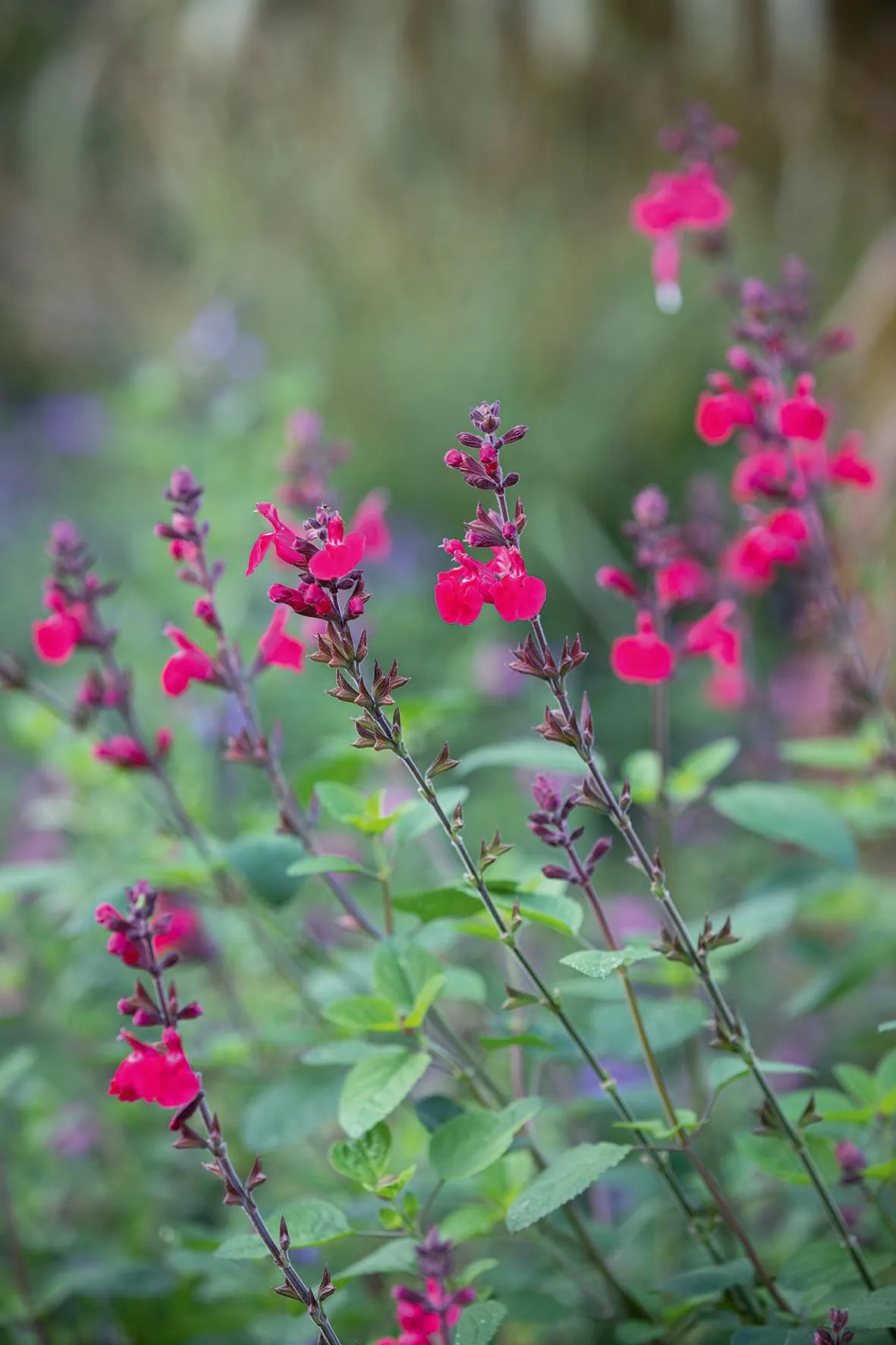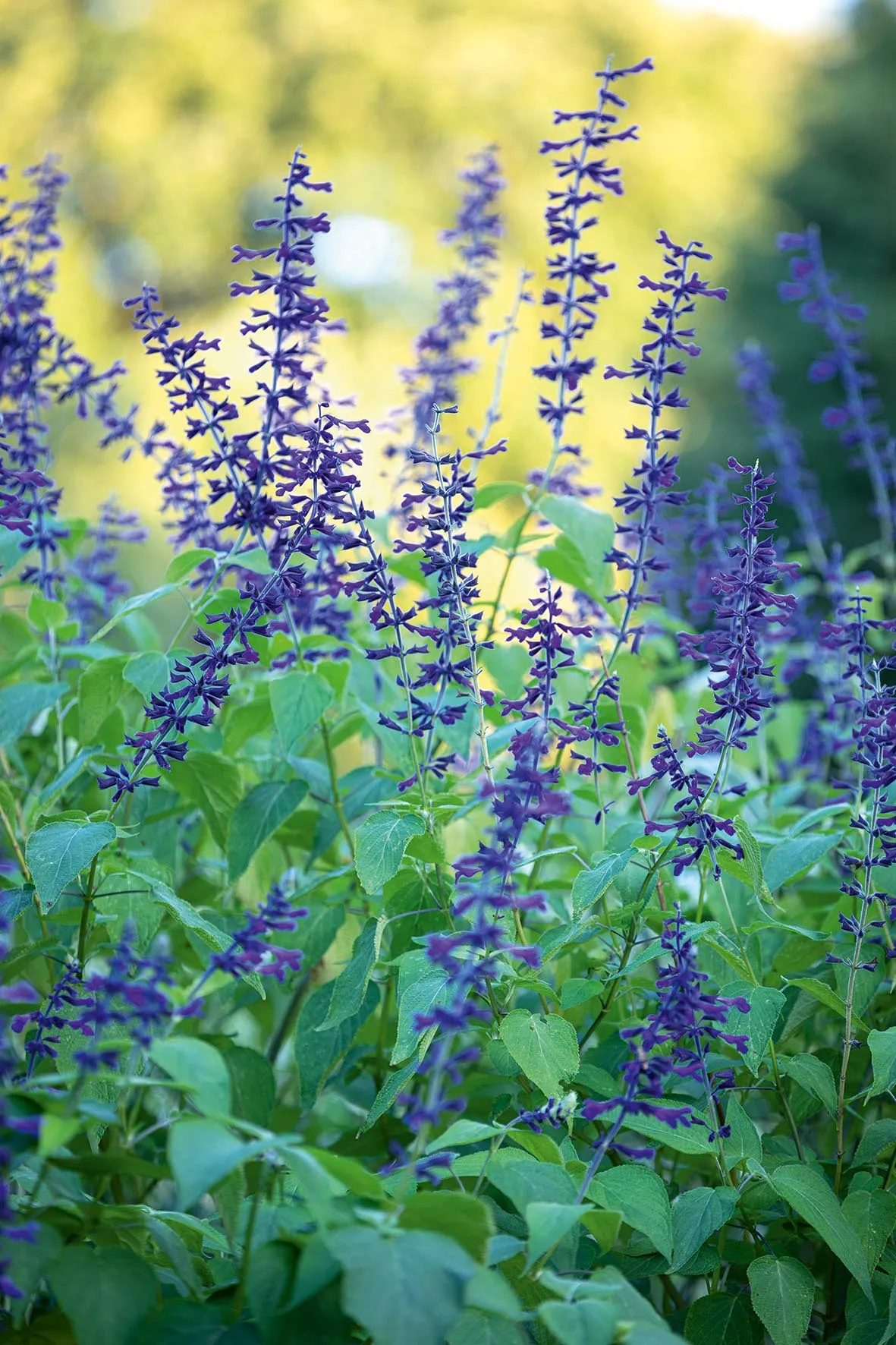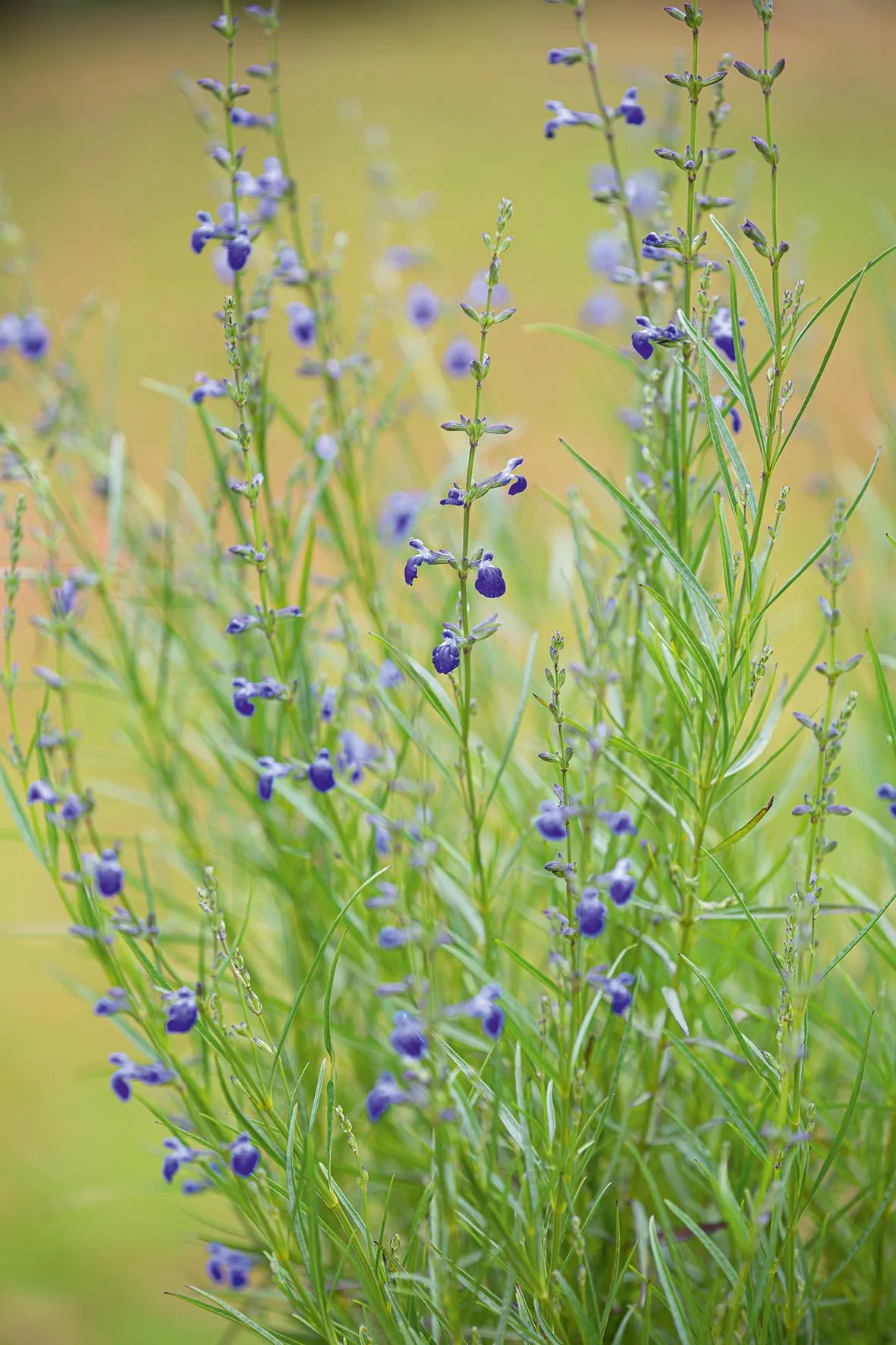Salvias are a wide and varied genus of plants, and a must for summer borders and containers. Their lipped flowers come in a myriad range of colours, including vibrant blues and purples, bright scarlets, pale pink, bright magenta, and even peach and yellow. All salvias have nectar-rich flowers that are loved by bees, butterflies and other pollinating insects and most have attractive aromatic foliage.
William Dyson's nursery at Great Comp in Kent has revolutionised the way we see salvias. Twenty-five years ago, when William took on the job of head gardener and nursery manager at the garden, salvias were either a bright-red bedding plant or a culinary herb. Now, thanks in great part to William, the genus is widely grown and admired.
William took over ownership of Great Comp’s plant nursery in 1995. Around the same time, plant collectors James Compton, John d’Arcy and Martyn Rix had returned from Mexico with a hybrid sage, Salvia x jamensis. “This was a pivotal point,” says William. “I managed to get hold of a few plants and here, where the soil is free draining and we get plenty of sunshine, they were fantastic – masses of colour for months on end. I then went about getting whatever salvias I could get my hands on.”
Seedling salvias began popping up in the garden and William decided to start a controlled breeding programme. In 1997 he launched Salvia ‘Silas Dyson’, a hardy, floriferous shrubby salvia with rich-crimson flowers that blooms from May to November. The plant was instantly popular and was followed by Salvia ‘Dyson’s Crimson’, an open-pollinated seedling taken from ‘Silas Dyson’, which has a darker flower and a compact habit.
Many more introductions of hardy shrubby salvias followed and were met with enthusiasm by gardeners who were seduced by their easy cultivation and extraordinarily long flowering period.
A major turning point for salvias came in 2004 with the distribution of a plant originally found growing in a pot on a Mexican patio. Salvia ‘Hot Lips’ is a flamboyant shrubby form, which is bicoloured during the summer but can have either single red or single white flowers in the cooler months. It has become extremely popular and encouraged gardeners to look at others salvias.
As well as the shrubby forms of salvia, the nursery also produces hardy perennial salvias and more tender forms. William continues to breed them. “I do ask myself if we really need more salvias but we are still getting things that are different. I am still as excited by salvias as I was 25 years ago."
What is salvia?
Salvia is a huge and varied genus of perennials and small shrubs with origins from around the world. They include hardy herbaceous perennials, with thin flower spikes in late spring and early summer. The tender herbaceous types flower from midsummer to the first frosts, as do the many hardy and half hardy shrubby types.
How to grow salvias
Where to plant salvia
Grow salvias in a sunny spot. They need well drained soil and cope well with poor, dry or stony soils. (An exception is the bog sage, Salvia uliginosa, which needs moist soil.) If you garden on clay, be sure to incorporate plenty of grit when planting, or grow salvias in pots. Hardy salvias may die over winter if the soil is very cold and wet, so take cuttings in late summer so that you can replace any losses.
There is a salvia for almost every style of planting scheme. They look great in a herbaceous border and also look great in a tropical or exotic planting scheme, pairing well with dahlias. Salvias cope well with wind, so are ideal for a coastal garden, and as many are drought tolerant, they are good plants for a dry garden. They also grow very well in pots.
When to plant salvia
Plant out your salvia in early summer. This will give the plant plenty of time to put roots down before winter. If you buy a salvia plant later in the season, consider waiting to plant it out until the following spring, so that the plant does not to succumb to winter wet.
When to prune salvia
Shrubby salvias should be cut back in late spring, when the risk of frosts has passed. Cut any dead stems back to where new growth is appearing. You can deadhead them to prolong flowering in summer, but this is not essential.
Hardy perennial salvias can be cut back to just above ground level immediately flowering, so that they may reflower later in the season. Then cut back again in autumn or early spring.
How to take salvia cuttings
Take a few cuttings in late summer to increase your stock of plants and insure against any losses over winter.
Select some non flowering shoots, around 8cm long and place immediately in a plastic bag to retain moisture
- Remove the lower leaves
- Place around the edge of a pot filled with gritty compost
- Water and cover with a plastic bag or put in a propagator
- Keep over winter in a frost free place
Salvia problems
Salvias are generally pest and disease free, but in climates with hot and humid summers, they may suffer from fungal diseases. They are prone to snail and slug damage.
16 of the best salvias to grow in the garden
From William Dyson's Dyson Salvias at Great Comp Garden
Salvia oxyphora
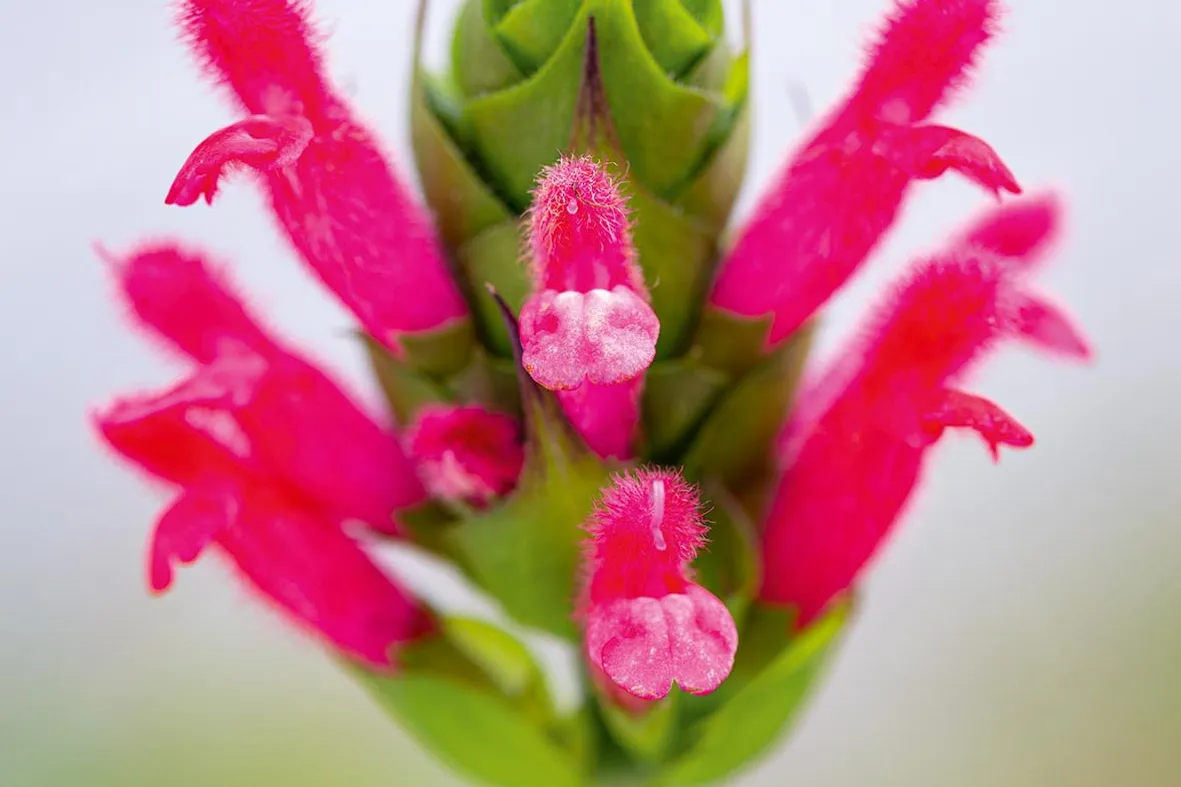
A perennial species from Bolivia with striking velvety flowers that have a sweet scent. It will grow in sun or part shade but keep it out of windy places as the stems are brittle. 1m. RHS H3.
Salvia bullulata ‘Blue Jade’
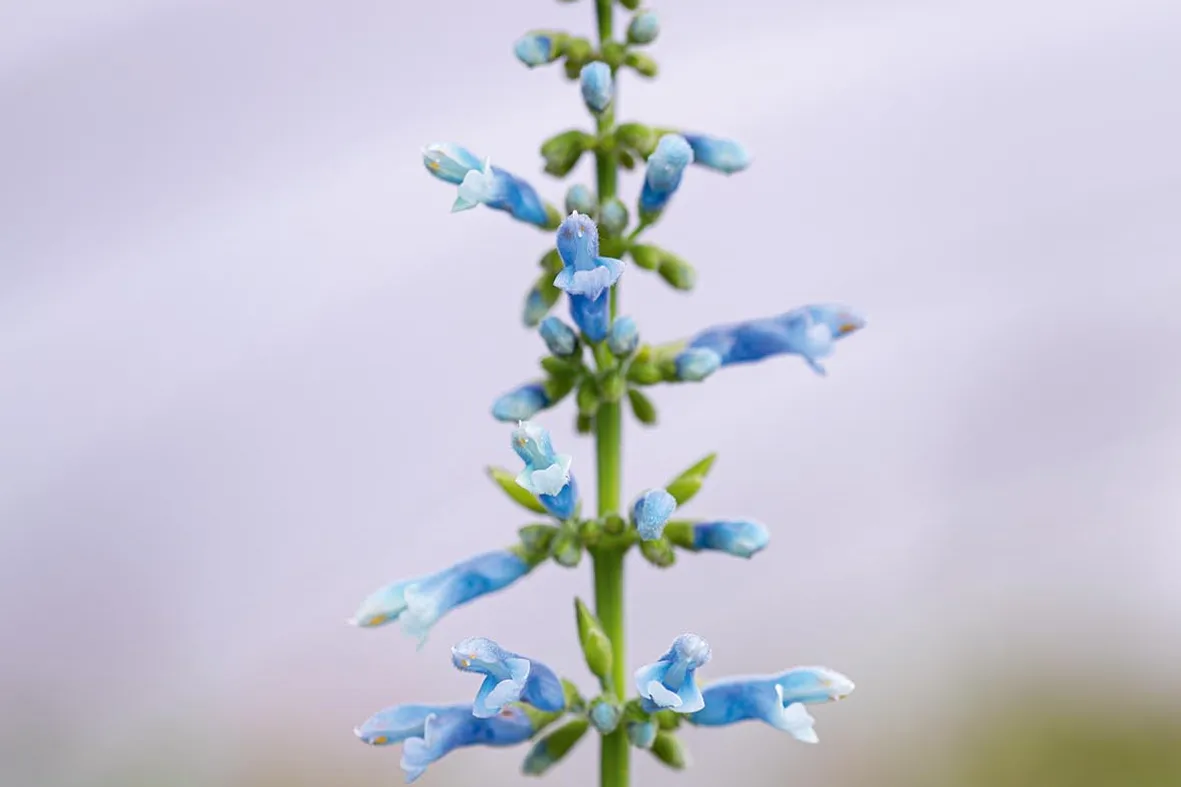
A pale-blue almost turquoise form of a rare and variable species from Peru. William has likened its colour to the jade vine Strongylodon macrobotrys and suggests growing it in partial shade. 60cm. RHS H2.
Salvia ‘Crazy Dolls’
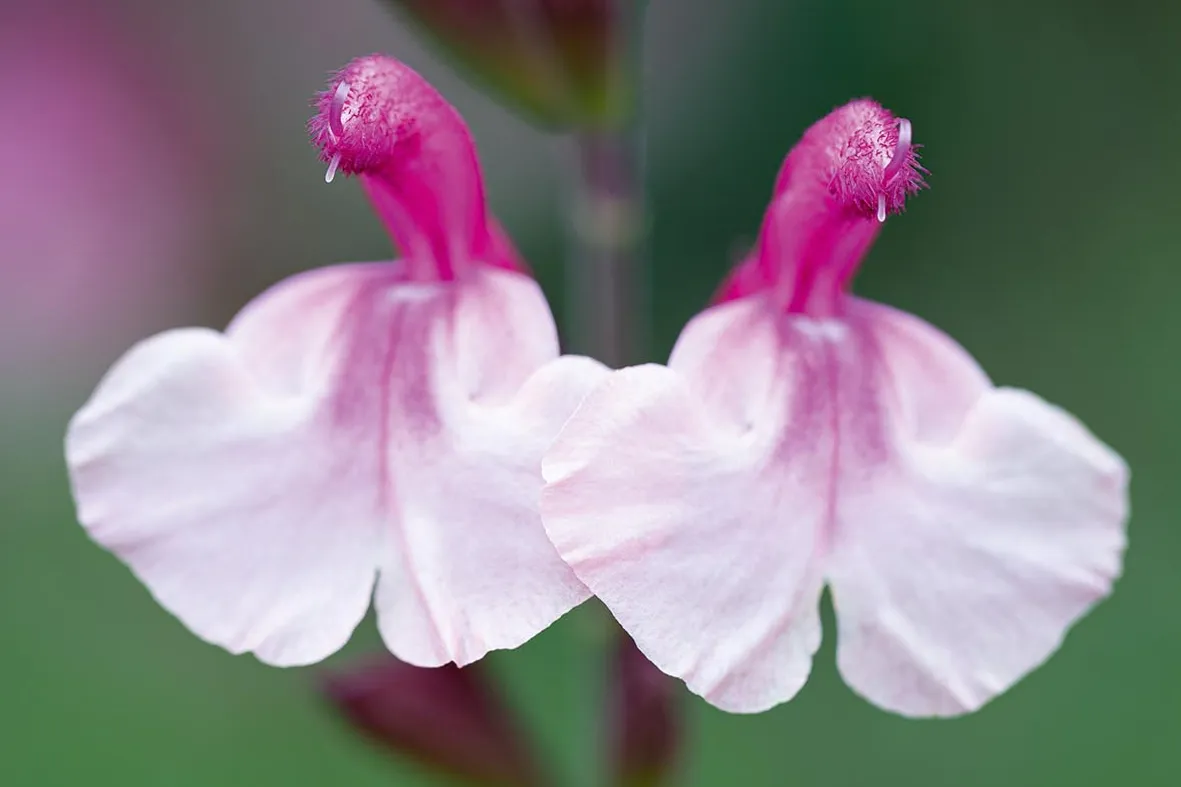
A compact, shrubby salvia bred in Belgium with a two-tone flower. The bottom lip is pale pink and the upper part of the flower magenta. 60cm. RHS H4.
Salvia ‘Flower Child’
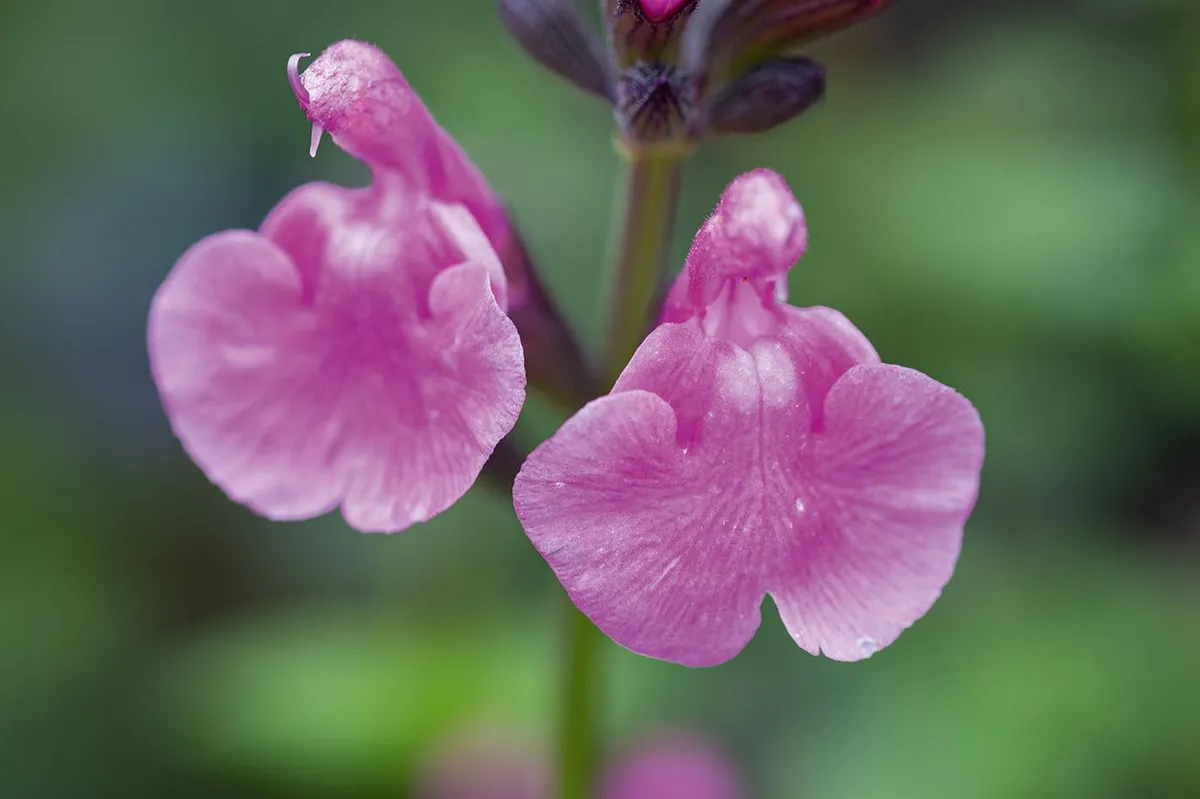
One of the smallest forms of Salvia microphylla. The candy-floss pink flowers appear from July to October. 40cm. RHS H5.
Salvia ‘Jeremy’
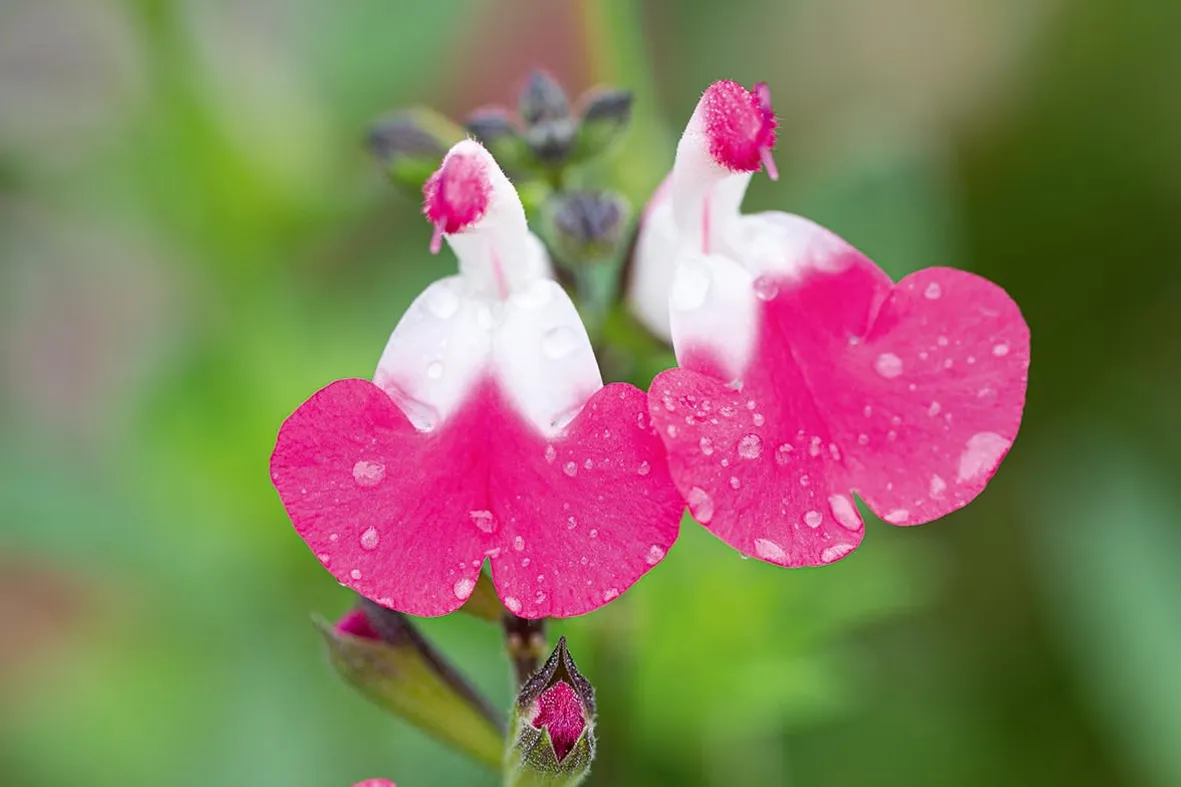
Shrubby salvia similar to the popular Salvia ‘Hot Lips’ with flowers that are bicoloured in the height of summer and are either all pink or all white early and late in the season. 90cm. RHS H5.
Salvia discolor
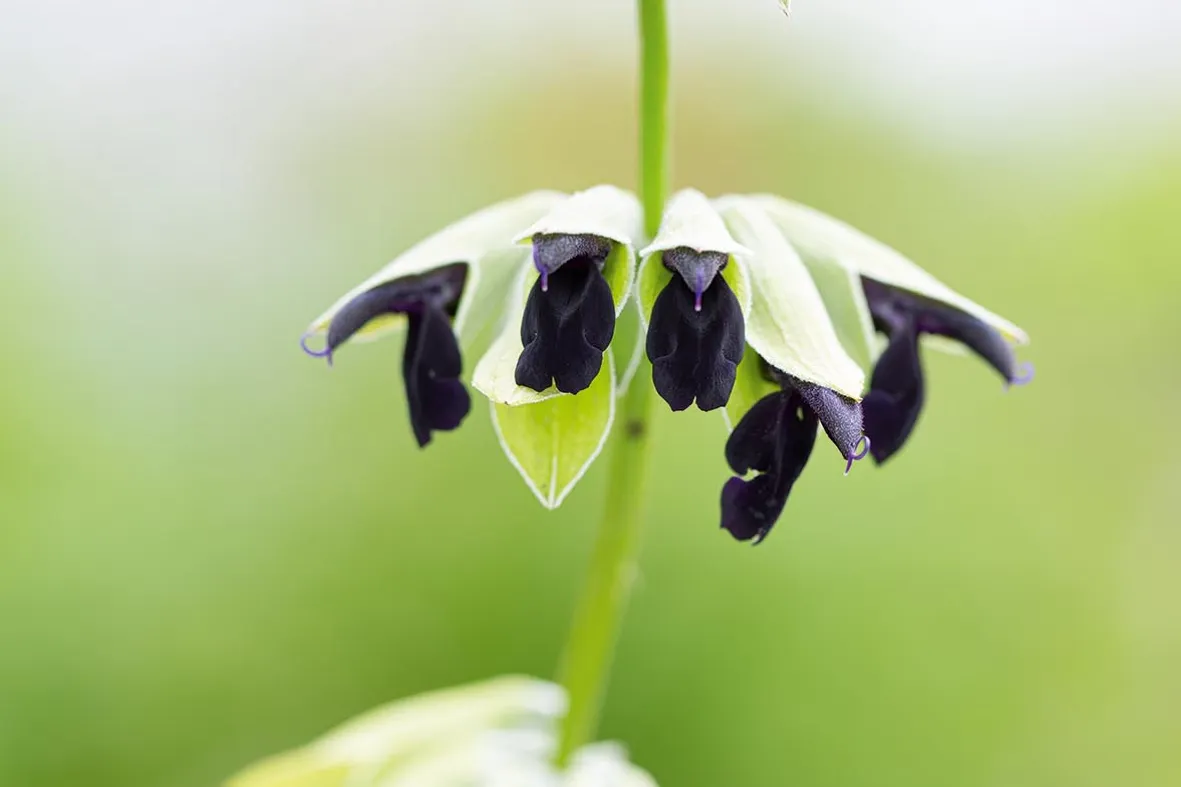
A straggly plant with aromatic silvery foliage, slightly stick-like stems and almost-black flowers. A tender perennial that needs mollycoddling over winter. The crushed foliage smells of blackcurrant. 50cm. RHS H2.
Salvia 'Amethyst Lips' (=‘Dyspurp’)
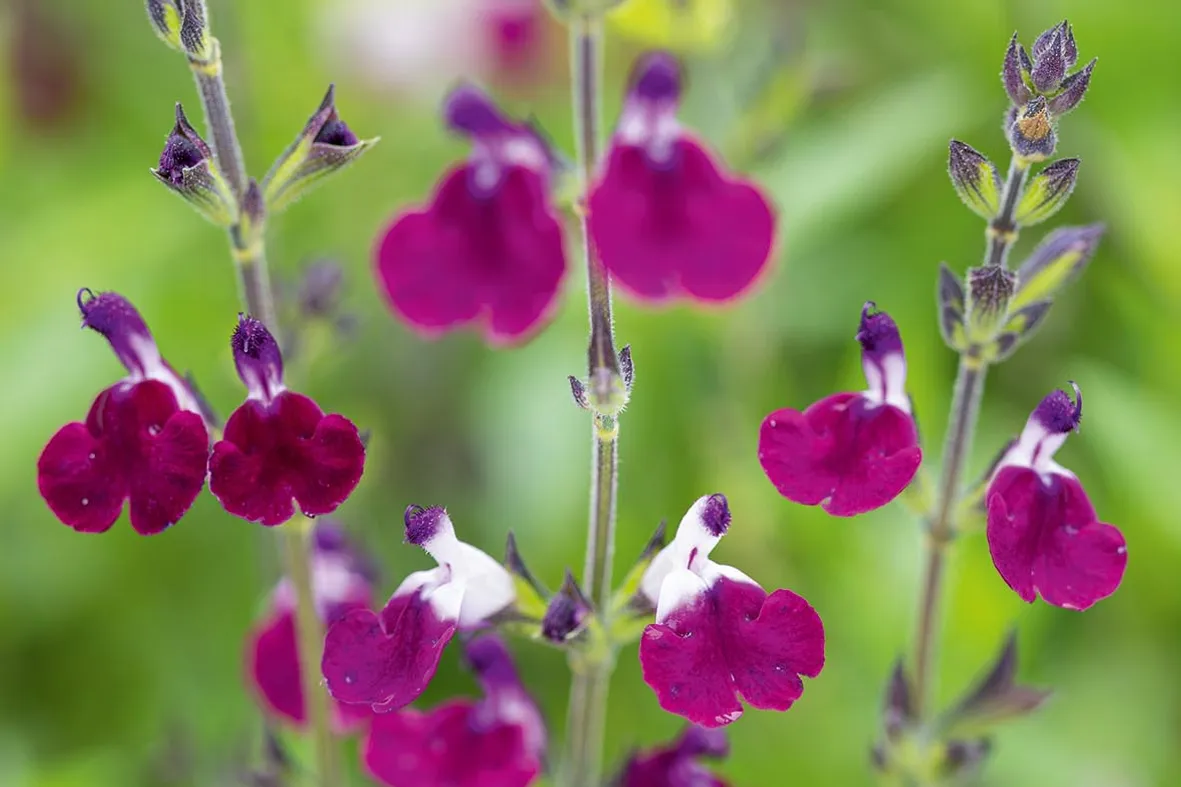
The bicoloured flowers are sometimes completely purple, other times entirely white, creating a striking effect reminiscent of S. ‘Hot Lips’. Raised by amateur
plant breeder David Dyson. 1m. RHS H4.
Salvia ‘Nachtvlinder’
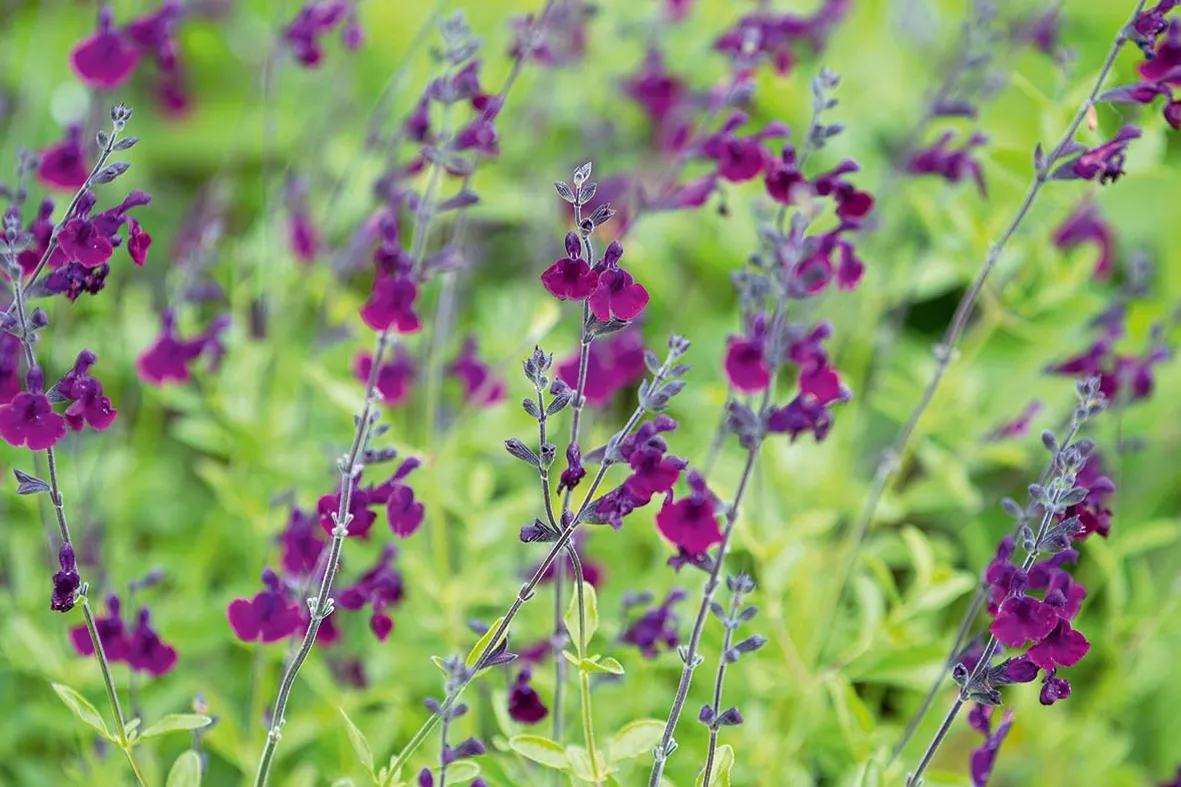
A shrubby, suckering plant found at the De Hessenhof nursery in the Netherlands. A floriferous plant, the flowers are a dark maroon-purple with a smoky sheen. 75cm. AGM. RHS H5.
Salvia ‘Amante’
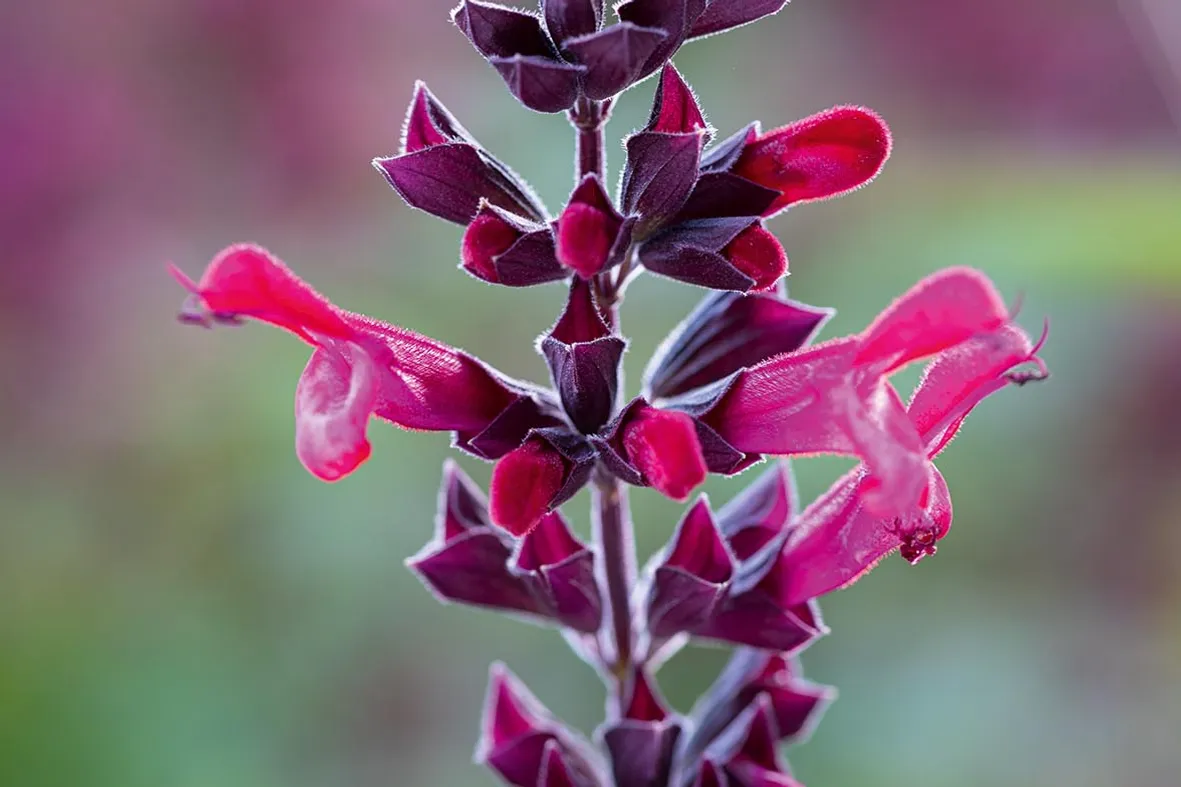
Recently developed in Argentina, the silky purple-red flowers and dark calyces were a breakthrough in Salvia guaranitica hybrids, which are usually a shade of blue. 90cm. RHS H3, USDA 8a-11.
Salvia corrugata ‘Bright Lights’
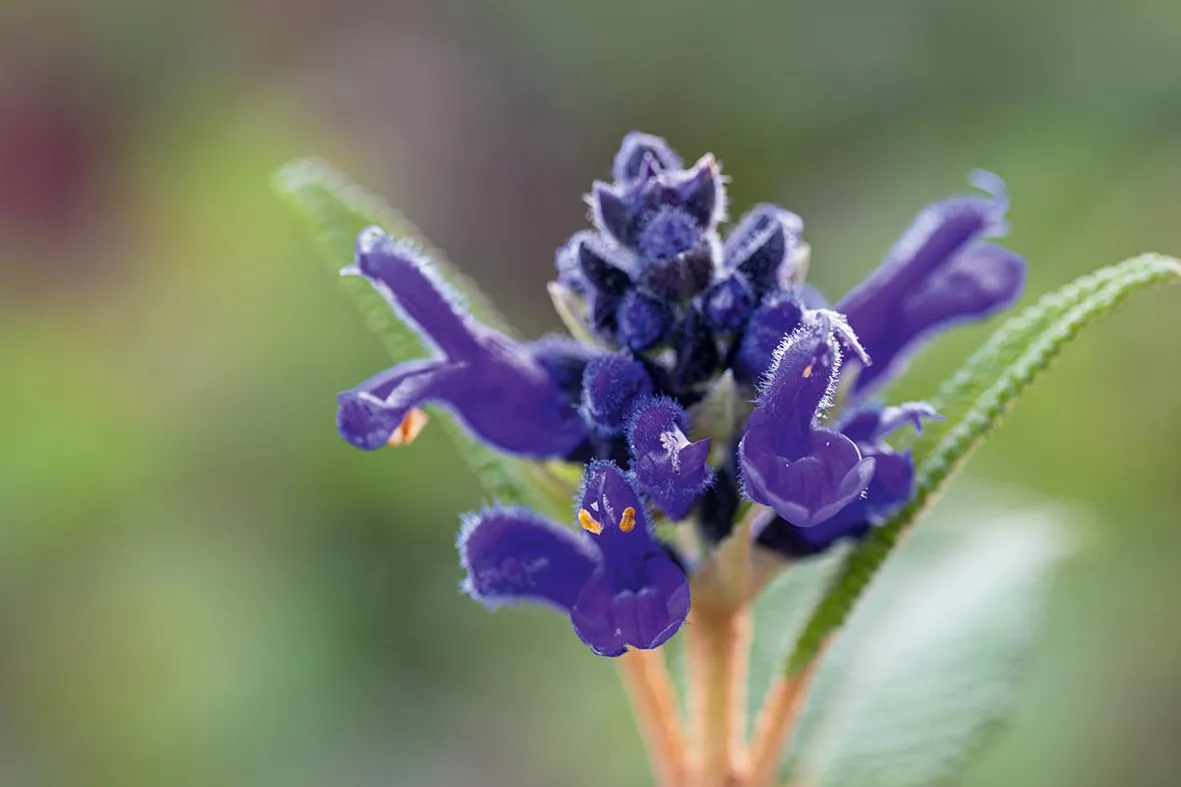
A fast-growing shrub with aromatic foliage and whorls of violet-blue flowers at the end of the summer. Unlike most salvias, it prefers moist soil. Best grown in a pot and overwintered inside. 90cm. RHS H3.
Salvia ‘Indigo Spires’
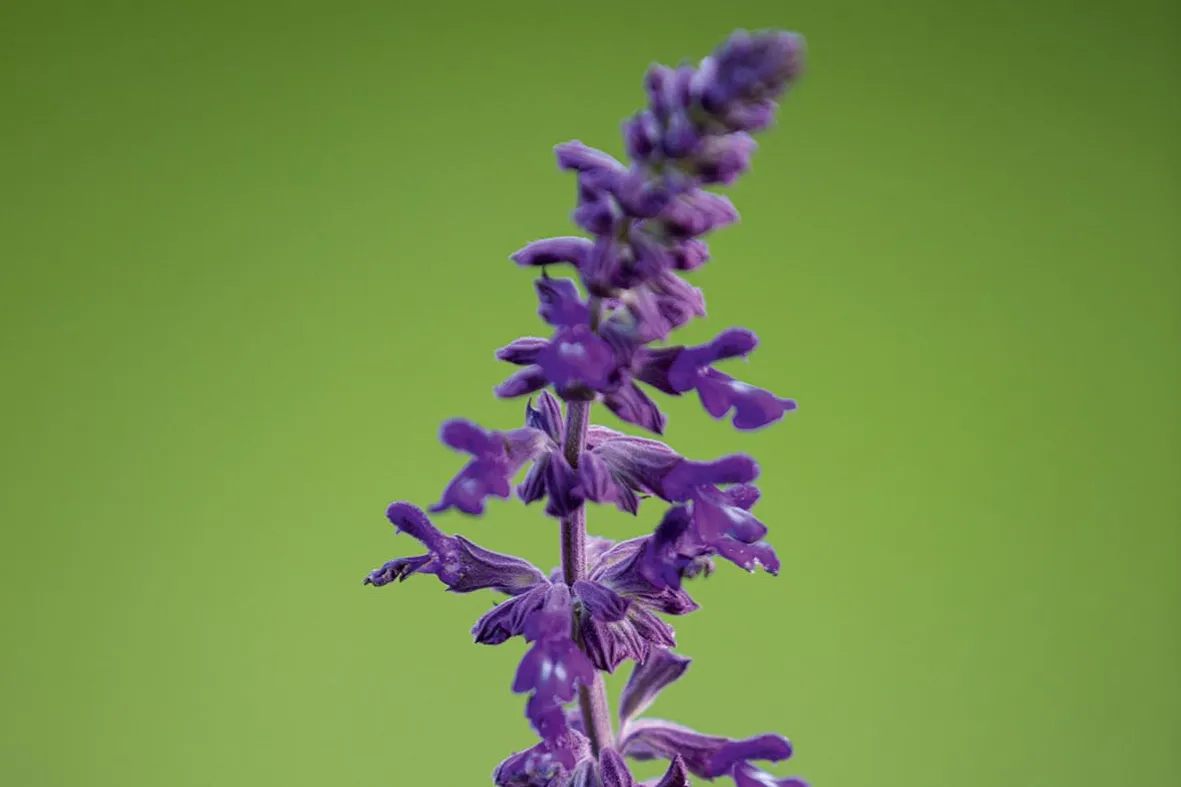
A popular hybrid with long spikes of dark-blue flowers and grey-green foliage. Often needs to be staked to prevent flopping over. Flowers all summer but at its best in autumn. 1.2m. RHS H3.
Salvia ‘Amistad’
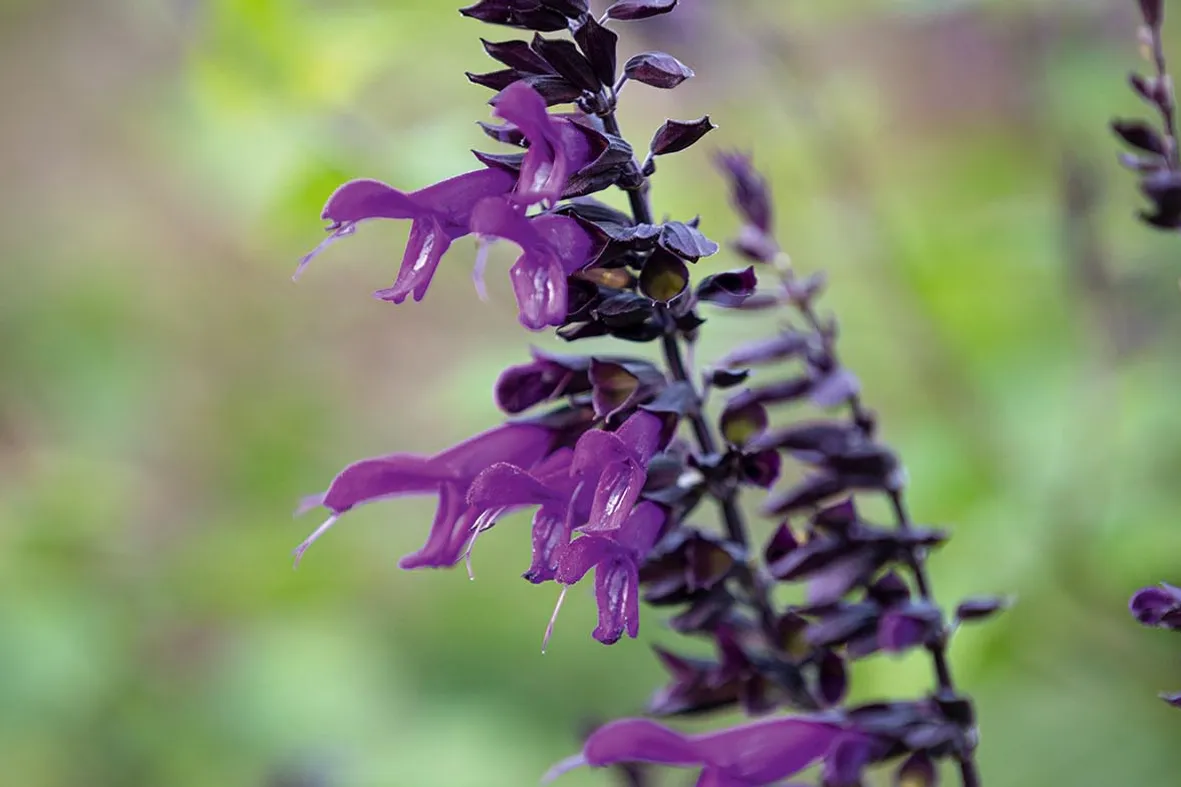
A spectacular tender perennial with aromatic foliage and masses of royal-purple flowers that have almost-black calyces. It starts flowering at the end of June and will continue up until October. 1.2m. AGM. RHS H3, USDA 8a-11.
Salvia ‘Phyllis’ Fancy'
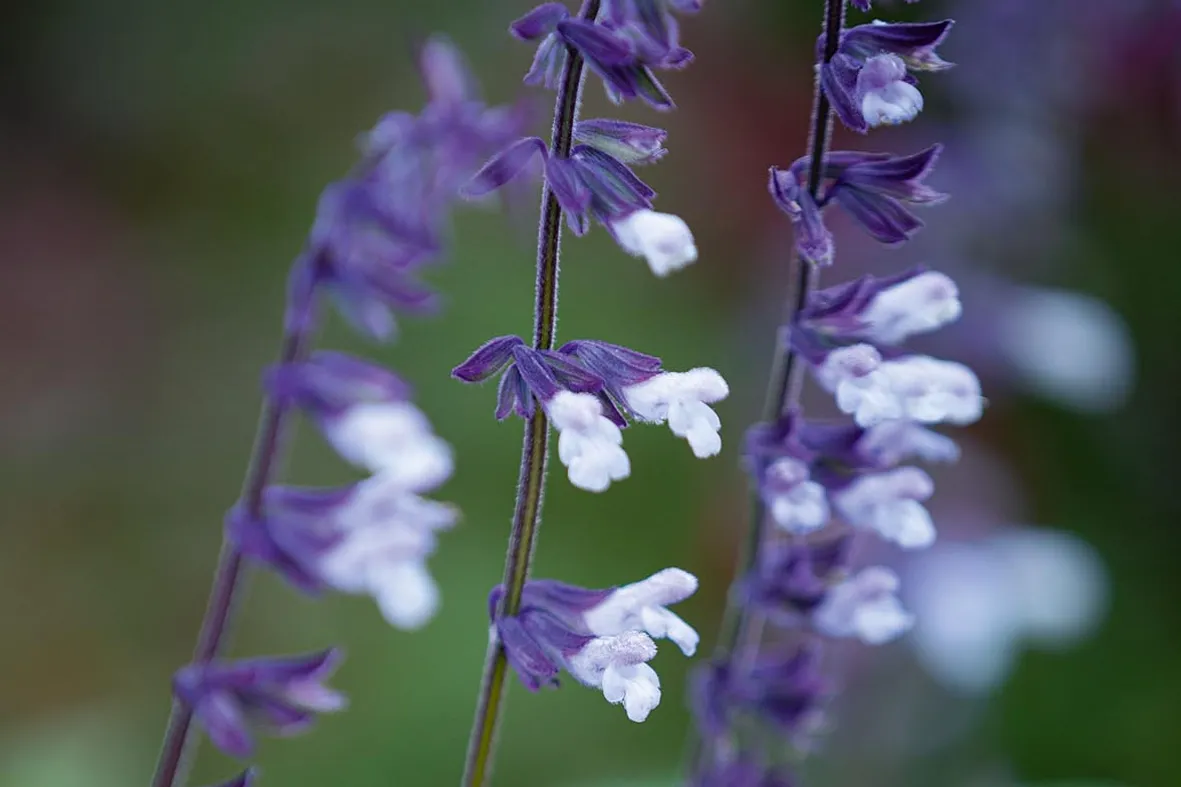
Its white flowers, the texture of velvet, become suffused with purple as they age and are held in dark-violet calyces. It was discovered in UC Santa Cruz Arboretum & Botanic Garden. 2m. RHS H3.
Salvia reptans ‘Texan Blue’
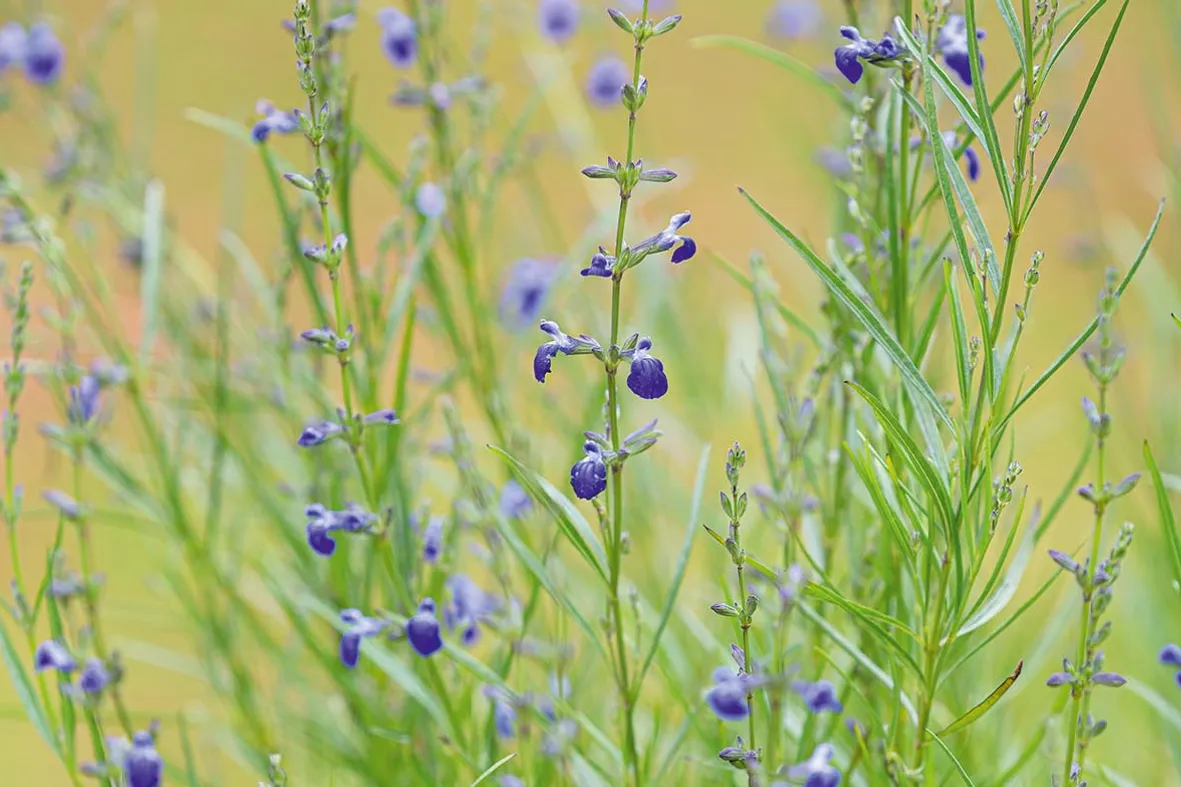
A midsummer-flowering herbaceous perennial that it is distinctly upright unlike the decumbent species. The flowers are a deep blue, as opposed to the pale blue of the species, with long, narrow leaves. 1m. RHS H4.
Salvia ‘Ping Pong’
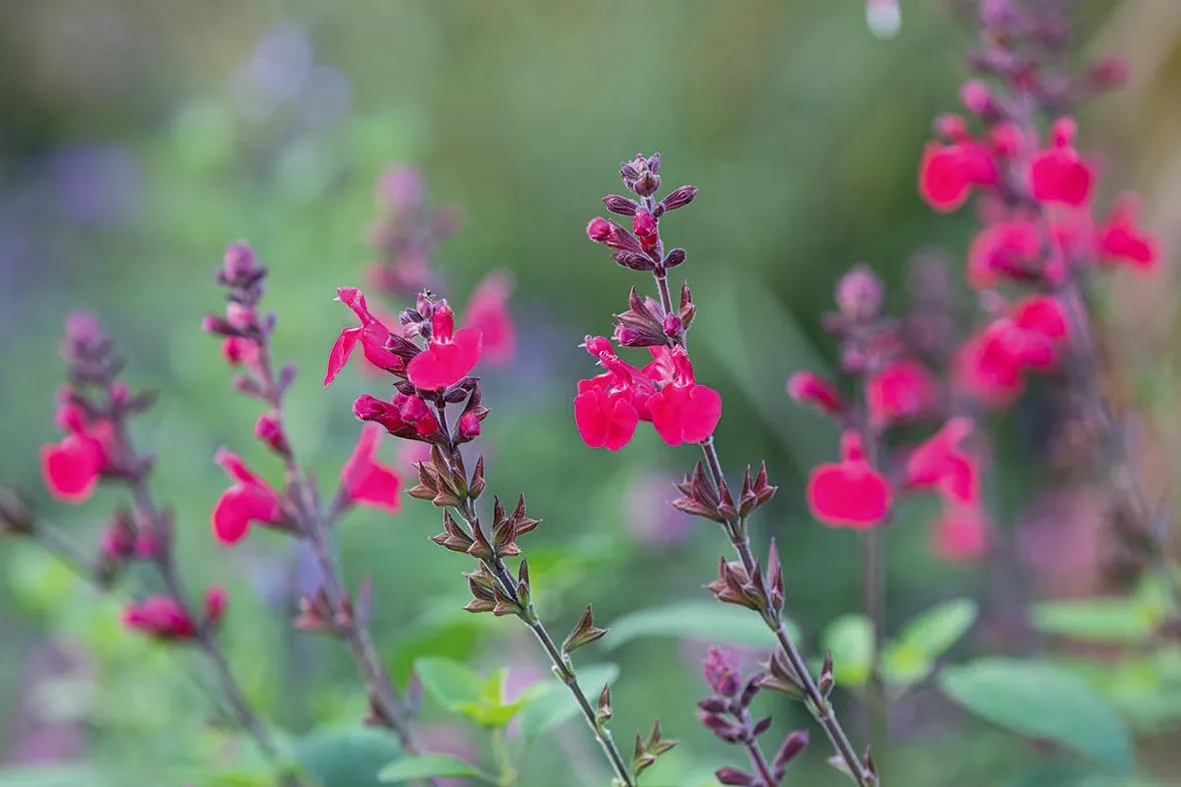
A new introduction from William that he selected for its densely packed flower spikes and long flowering period. The flowers are deep pink and appear from early June to October. 1m. RHS H5.
Salvia concolor
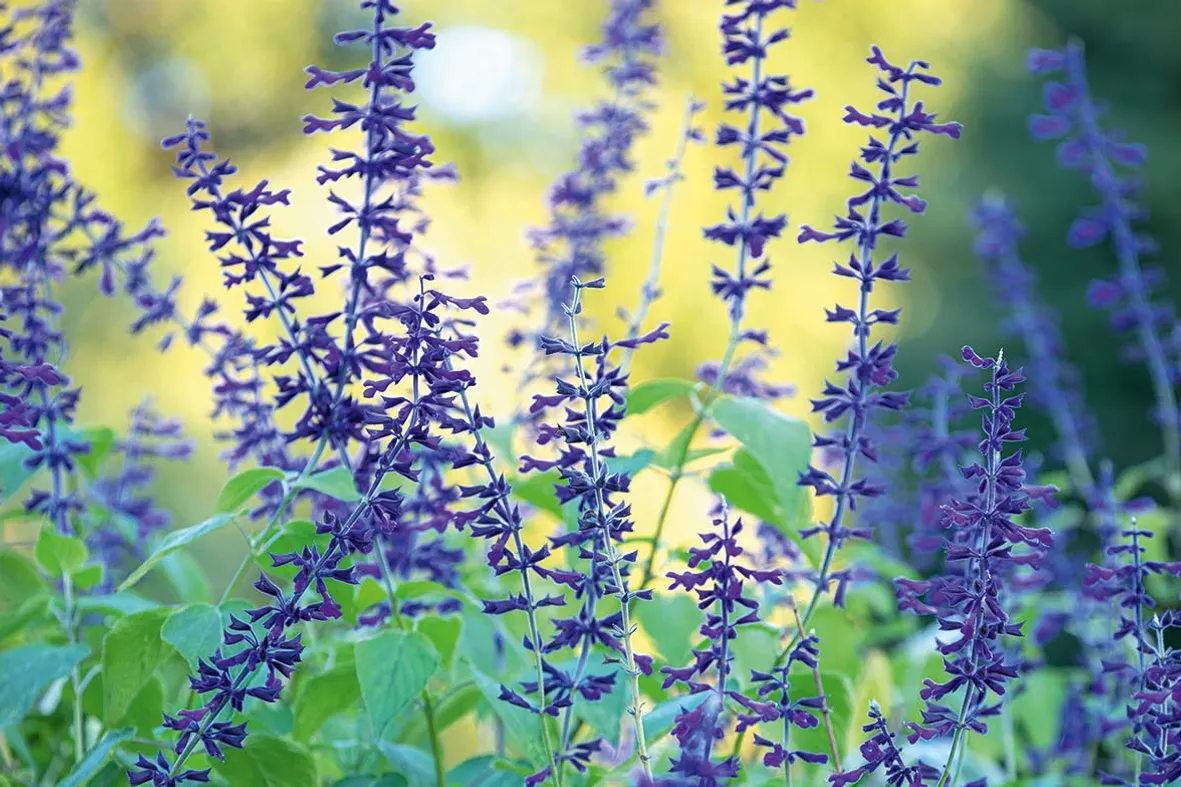
A massive plant with deep royal-blue flowers on flower spikes that can be 50cm long. 2.5m. RHS H4, USDA 8a-10b.
More great salvias for the garden
Salvia microphylla ‘Cerro Potosi’
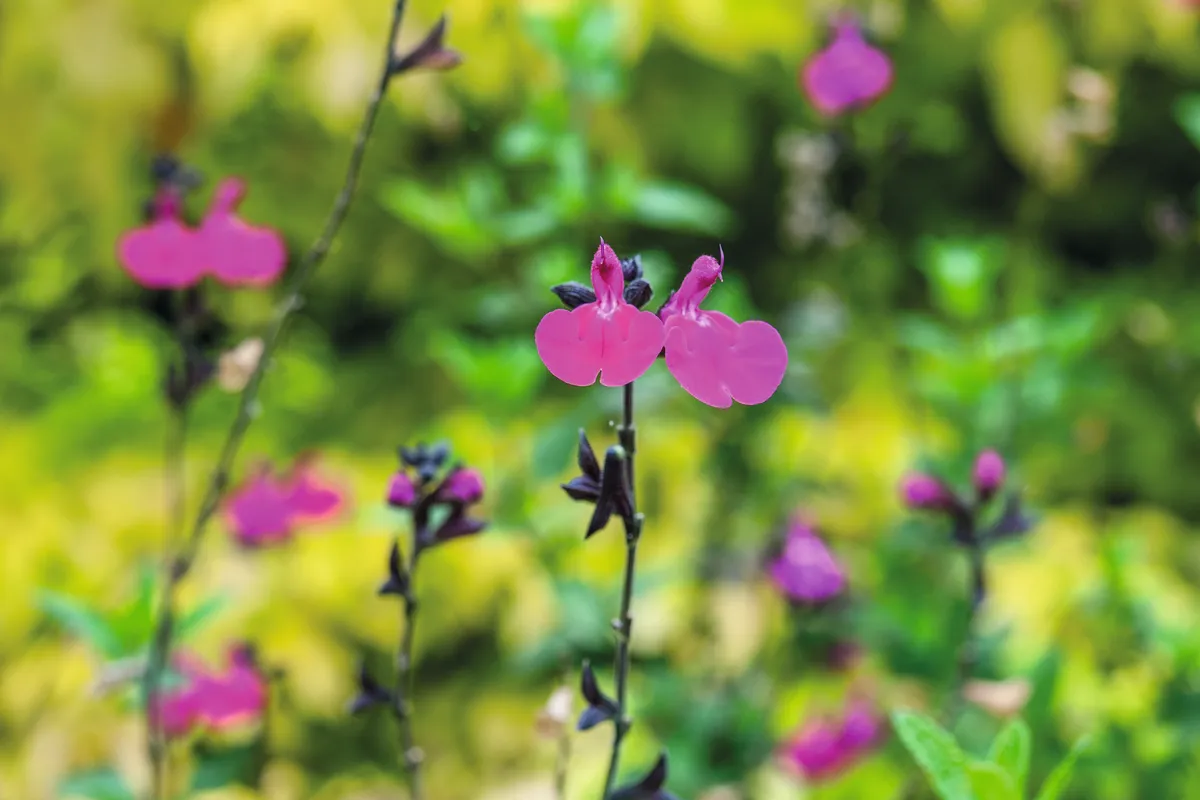
This tough salvia can hold its own in the garden, even in quite heavy soil. Come spring it looks a little sad, but with a light prune to tidy it up and encourage new growth, it quietly recovers and goes on to produce a wonderful show through the summer well into autumn. The vivid, magenta flowers are small but numerous and carried on stiff twigs well above the scented foliage.
Height 1.3m. Origin Mexico. Conditions Any rich soil that is not saturated; full sun. Hardiness RHS H4. Season Summer – autumn.
Salvia pratensis ‘Indigo’
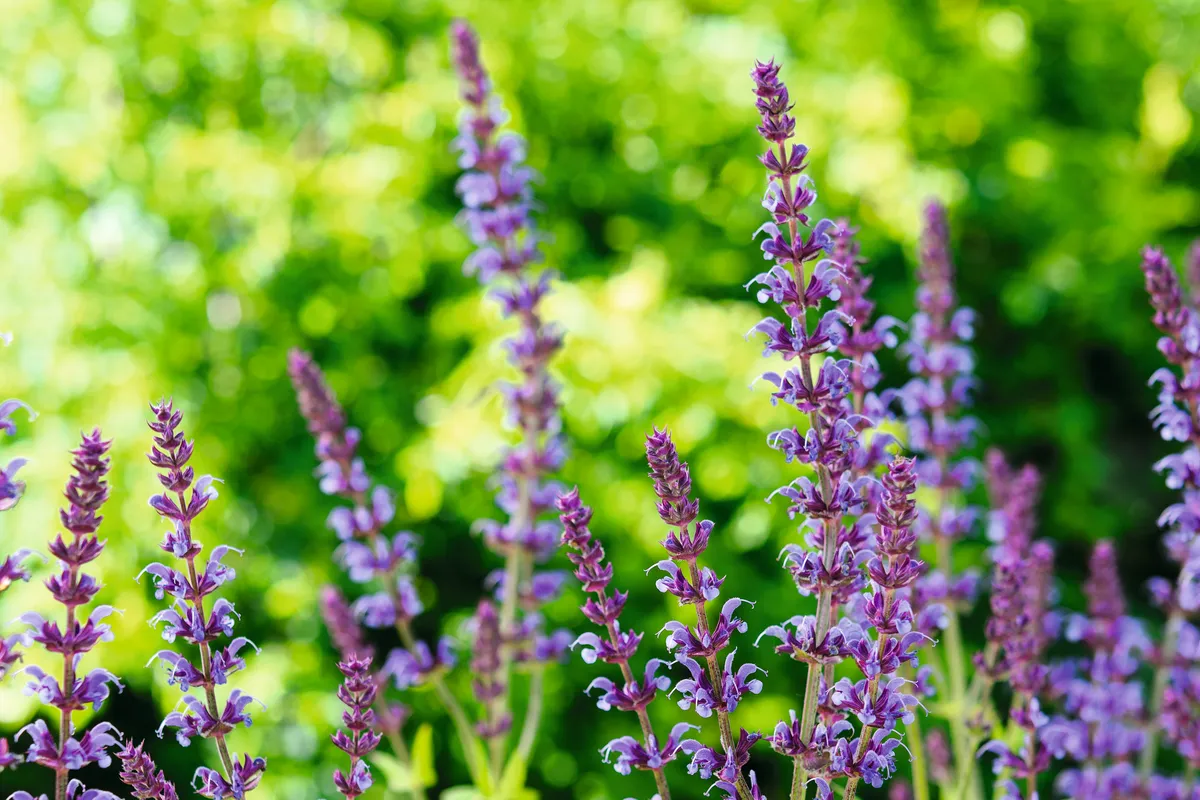
The meadow clary is one of two salvia species native to the British Isles, with blue flowers. In recent years, seed companies have offered a range of colour forms from white and pink to blue and purple. Salvia pratensis ‘Indigo’ was raised by Thomas Carlile at Loddon Nurseries in Twyford, Berkshire. It has a rosette of foliage and rather lax flower stems with a form resembling an upside-down pyramid so its top is wider than its base. The violet-blue, flower spikes are large for this species and very attractive to bees. This cultivar is raised by cuttings.
Height 90cm. Origin Europe. Growing conditions Well-drained soil; sun. Hardiness RHS H7, USDA 7a-11. Season of interest Summer.
Salvia leucantha ‘Purple Velvet’

Salvia leucantha is a vigorous, tender salvia, rather late-blooming. It makes a mound of long, felted, grey leaves, usually nearly a metre high and wide by September when the flowers begin to emerge. In October it is a fountain of purple. The flowers are actually white, but the calyxes and the whole flowering stem are covered in furry purple velvet, making the long arching flower stem look like scrunched up purple and white chenille, totally surreal. ‘Purple Velvet’ is all purple, less shocking but easier to use in the garden.
Height 1m. Growing conditions Full sun, frost free. Hardiness USDA 8a-10b. Origin Mexico and Central America. Season of interest September – October.
Salvia guaranitica ‘Black and Blue’

To achieve a full display of these late-flowering salvia (flowers in November) requires a fine summer and a mild, frost-free autumn. Inky purple flowers present in classic hooded structure, contrasted by generous felted foliage. However, perched aloft stems of nearly 3m tall they are sadly beyond easy appreciation. By planting out on rich, moist ground alongside a pool, and training up bamboo supports to reach a cantilevered balcony, we have found a way of admiring the magnificent blooms face to face.
Height Depending on treatment and conditions, but potentially up to 280cm. Origin South America. Soil Deep, well-nourished soil. Season August – November
Salvia greggii ‘Stormy Pink’

Around 20 years ago nurserywoman Derry Watkins, owner of Special Plants, found an accidental seedling in her nursery. She grew it on, took cuttings and then, assuming it was tender, left it in the garden to die. Surprisingly, it is still there, not fazed in the slightest by hard winters. Derry cuts it hard, back to thick stems like bonsaied tree trunks every spring and it grows to around four feet every summer, blooming from June right through until October. Derry named it ‘Stormy Pink’ because of the grey calyx that appears behind each one of the creamy pink flowers.
Height 1m. Growing conditions Sun and drainage. Hardiness RHS H5, USDA 7. Origin Seedling from Special Plants. Season of interest June – October.
Salvia confertiflora

Giant pots of this, threaded informally between specimen Agapanthus praecox creates an exuberant floral display which lasts into October. It may not be winter hardy, but the rate and quality of growth in a single season merits better recognition for summer display. Stems are covered in a rash of scarlet hairs that define the elegant profile and each carry a succession of coral-red flowers in ascending whorls. Even when flower petals drop, the dark red calyces will command admiring glances. Cuttings taken at the end of summer can be over-wintered for next year.
Height 150cm. Origin Native to South America/Brazil. Soil Free-draining loam, or perfect for pots. Season July to September.
Salvia ‘Phyllis’ Fancy’
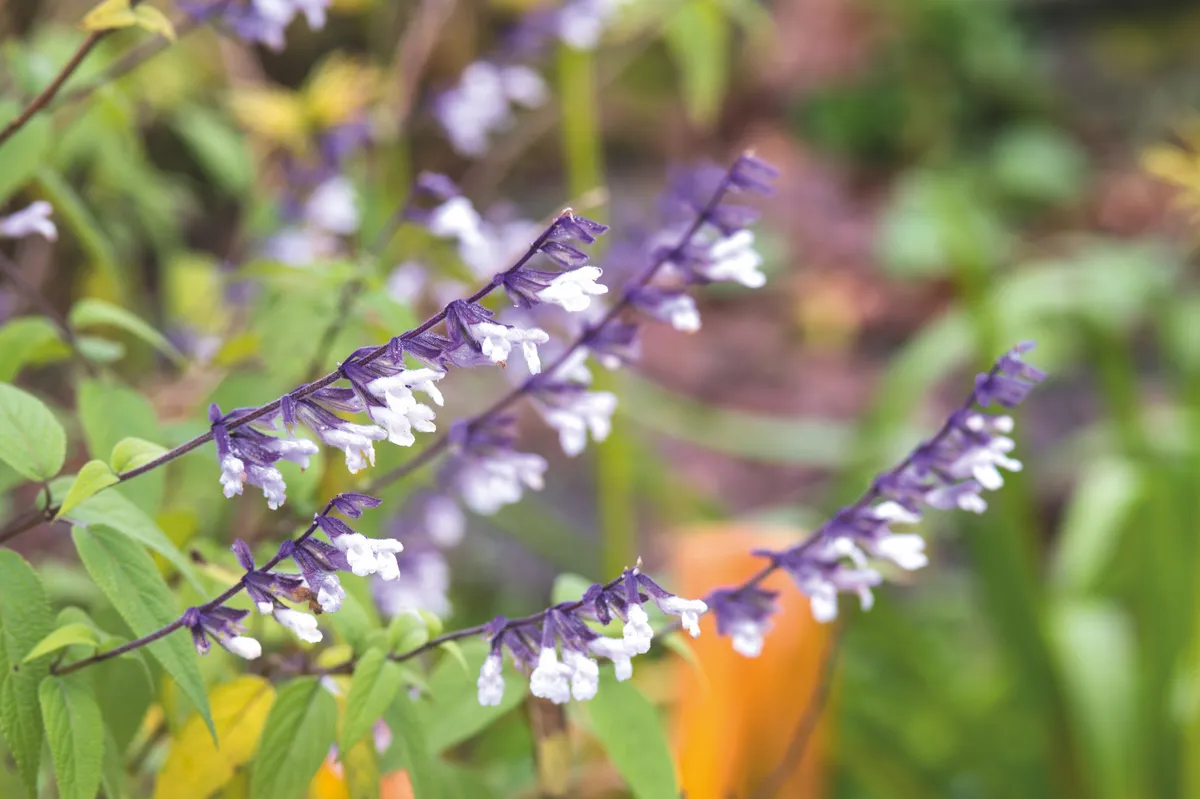
Although many salvias come into flower earlier than ‘Phyllis’ Fancy’, none have a nicer colour in late autumn. The colour seems to deepen as temperatures fall. The lavender-blue flowers, which have a whitish lip, are set off by inky-blue brachts. If you plant your overwintered pot in the open ground in spring, you will have a gorgeous clump come autumn laden with flowers. This can mean that it’s difficult to find a shoot without flowers for taking autumn cuttings, but with some luck the original plant will survive if the winter is not too cold.
Height 1.2m. Origin Mexico. Growing conditions Best grown in a pot in a warm, sunny spot. Over winter indoors. Hardiness RHS H4, USDA 9b-11. Season of interest Autumn.
Salvia greggii ‘Icing Sugar’

All the Salvia gregii cultivars flower over a long period. Although there is never a mass of flowers they continue throughout summer. Dozens of new forms are being introduced at the moment. I like this one for the complementary colours of its dark pink and pale pink flowers. Lots of claims are made about the hardiness of this plant but given they have not survived the past two winters, take cuttings at the end of the summer, or treat them as an annual and buy new plants each year.
Height 50cm. Origin Garden hybrid. Conditions Sun or part shade in well-drained soil. Season Flowers from June until the end of September.
Further reading on Salvia
The Gardener's Guide to Growing Salvias by John Sutton (David & Charles, 1999). Definitive guide but now out of print. Try second-hand book shops for a copy.
Where to buy
Dyson's Nursery
The most extensive stock of ready-to-buy salvia plants in the country.
Great Comp Garden, Sevenoaks, Kent TN15 8QS.
Tel 07887 997663, dysonsalvias.com
Ashwood Nurseries
Ashwood Lower Lane, Ashwood, West Midlands DY6 0AE.
Tel 01384 401996, ashwoodnurseries.com
John and Lynsey's Plants
An outstanding garden and the UK's widest selection of salvias, usually available to order through propagation. Open by appointment - and for the National Gardens Scheme.
2 Hillside Cottage, Trampers Lane, North Boarhunt, Hampshire PO17 6DA.
Tel 01329 832786, no website
Other good sources for salvia
The Beth Chatto Gardens
Elmstead Market, Colchester, Essex CO7 7DB
Tel 01206 822007, bethchatto.co.uk
Cotswold Garden Flowers
Browns' Nurseries, Gibbs Lane, Offenham, Evesham, Worcestershire WR11 8RR
Tel 01386 833849, cgf.net
Dove Cottage
Shibden Hall Road, Halifax, West Yorkshire HX3 9XA
Tel 01422 203553, dovecottagenursery.co.uk
Larch Cottage Nurseries
Melkinthorpe, Penrith, Cumbria CA10 2DR
Tel 01931 712404, larchcottage.co.uk
